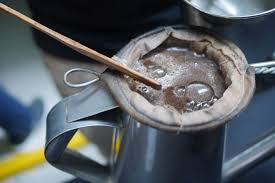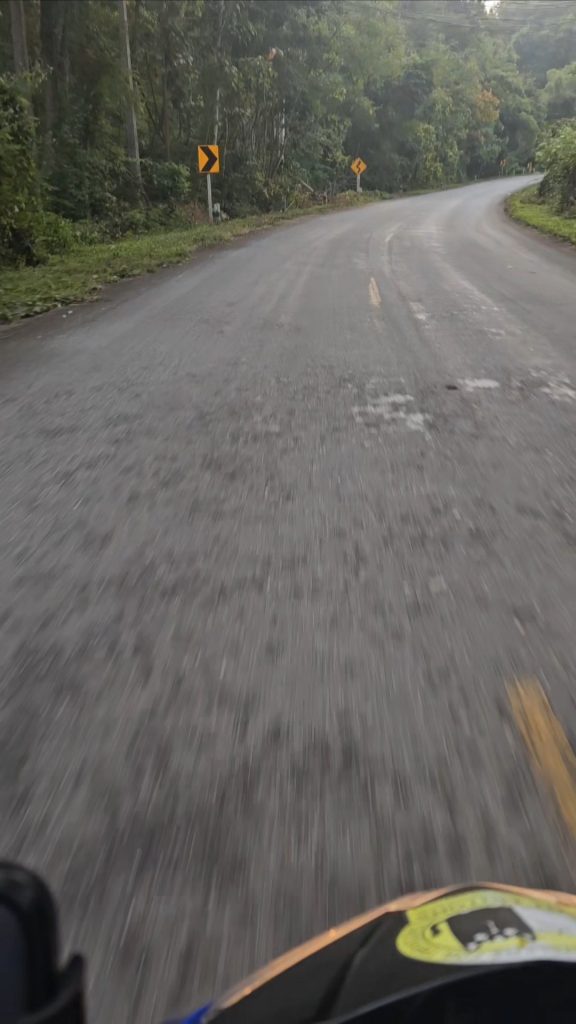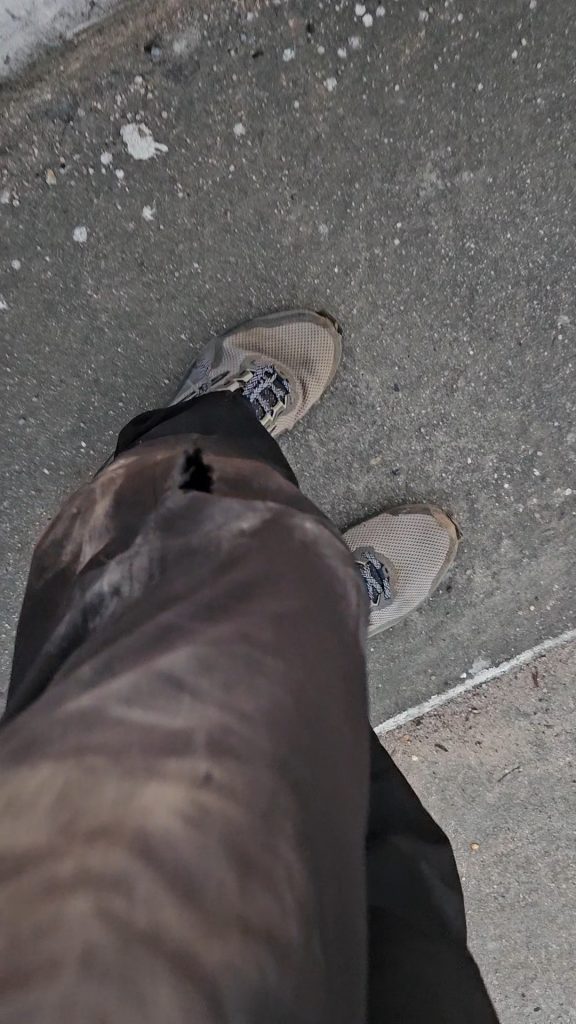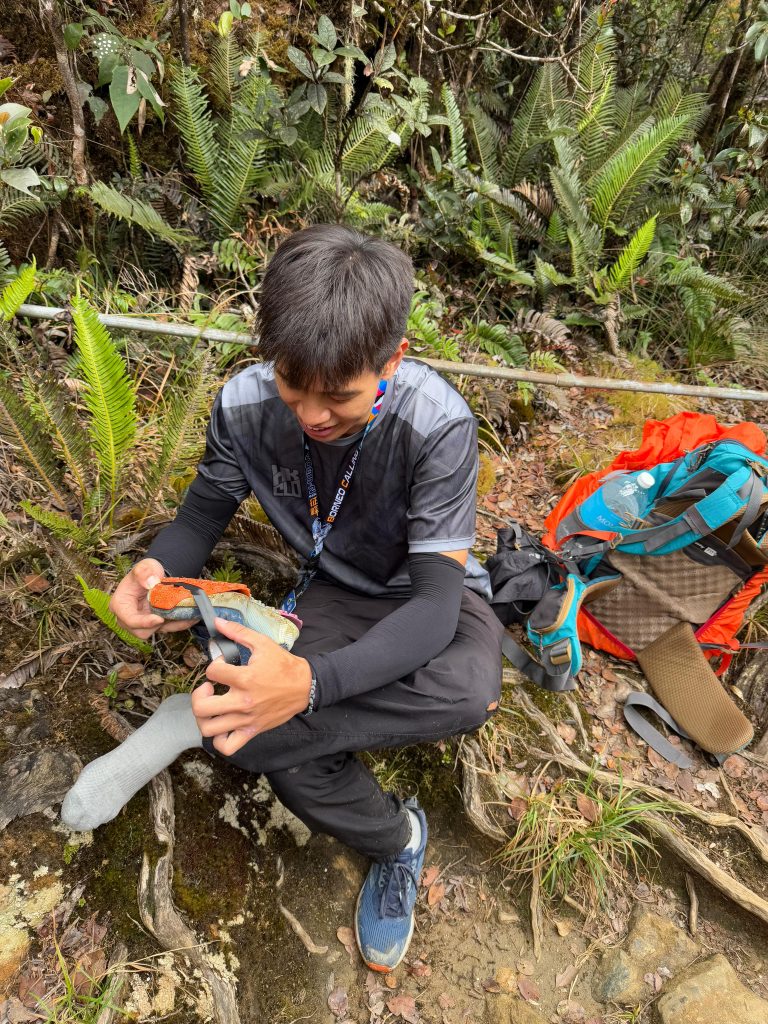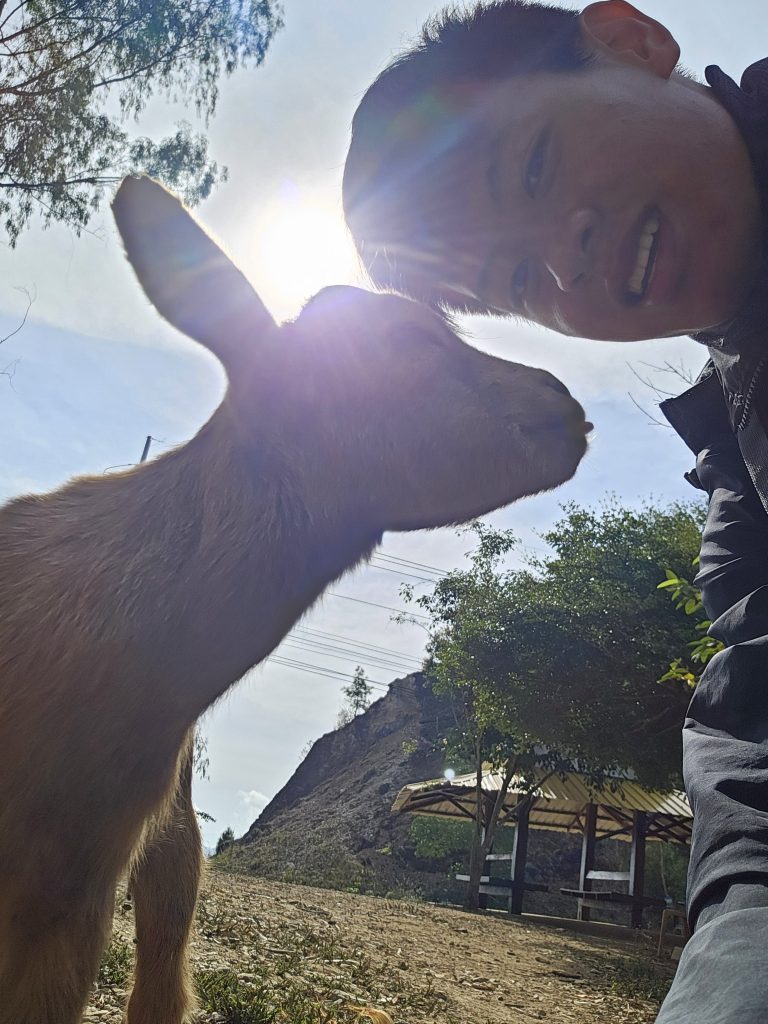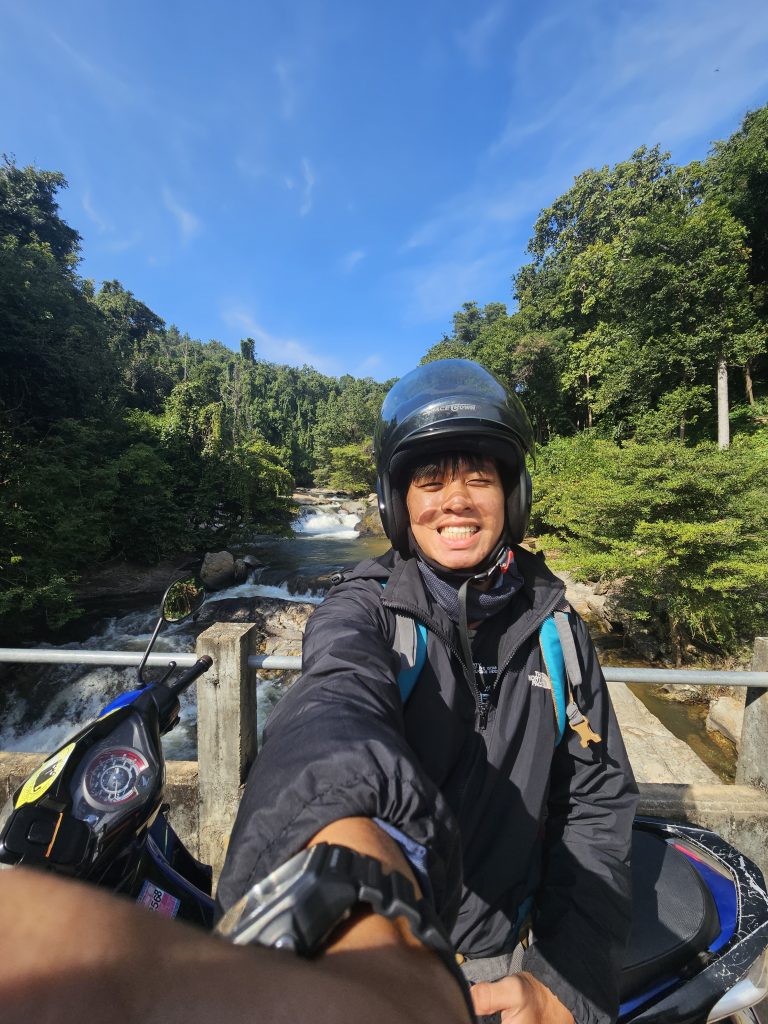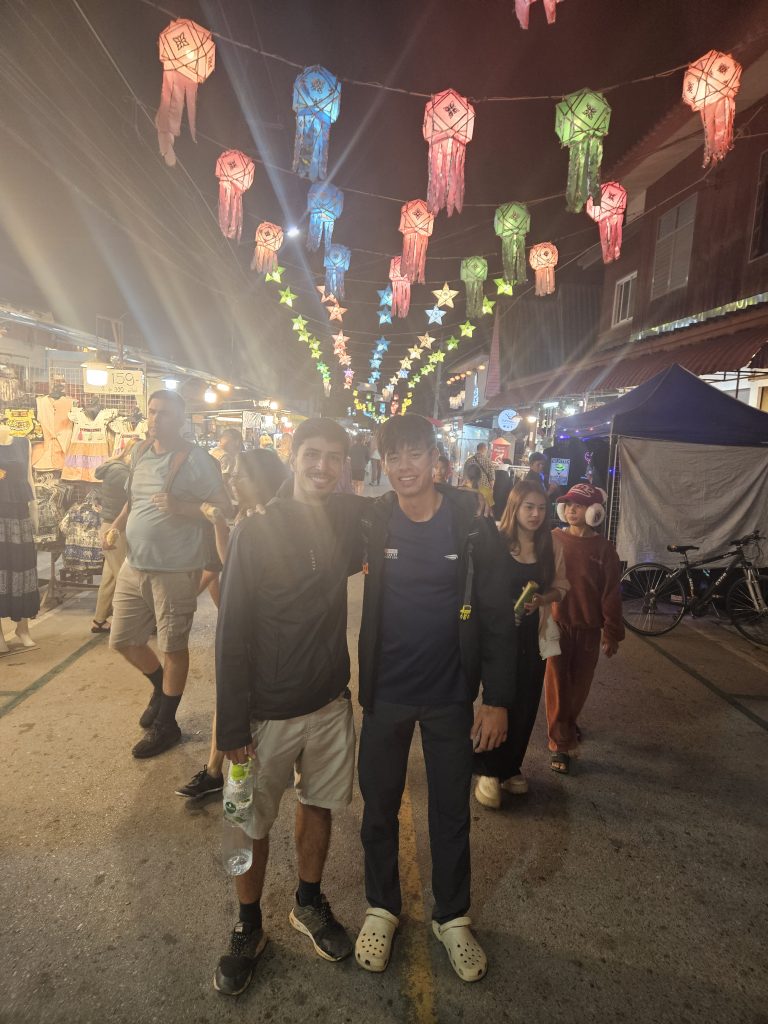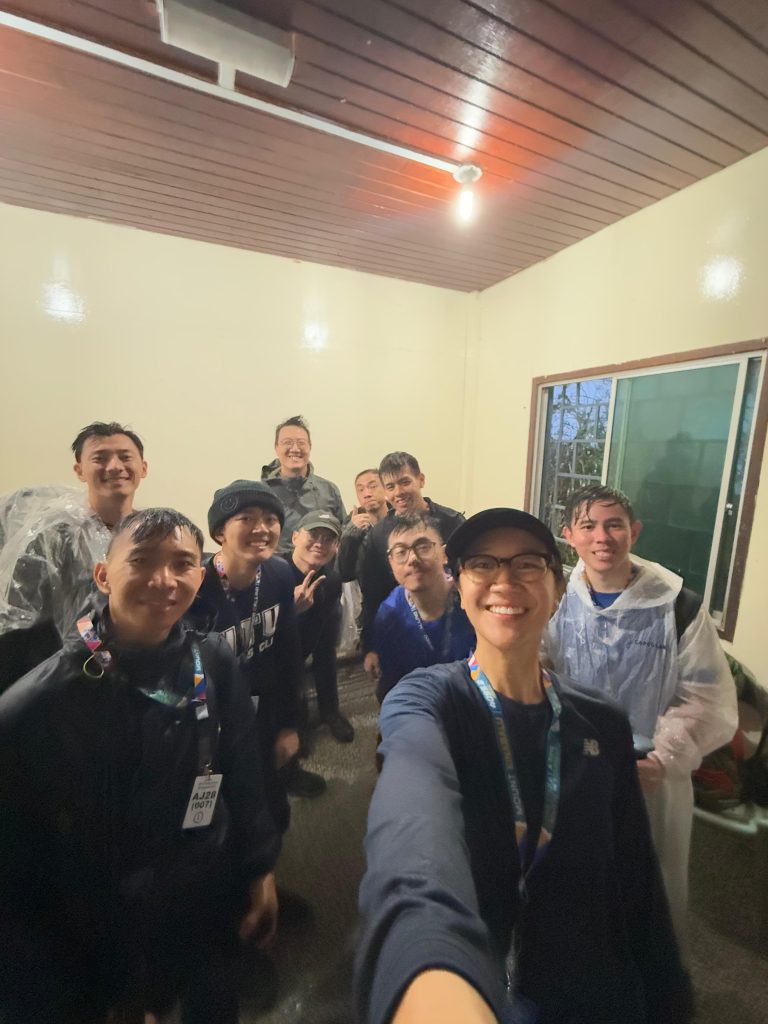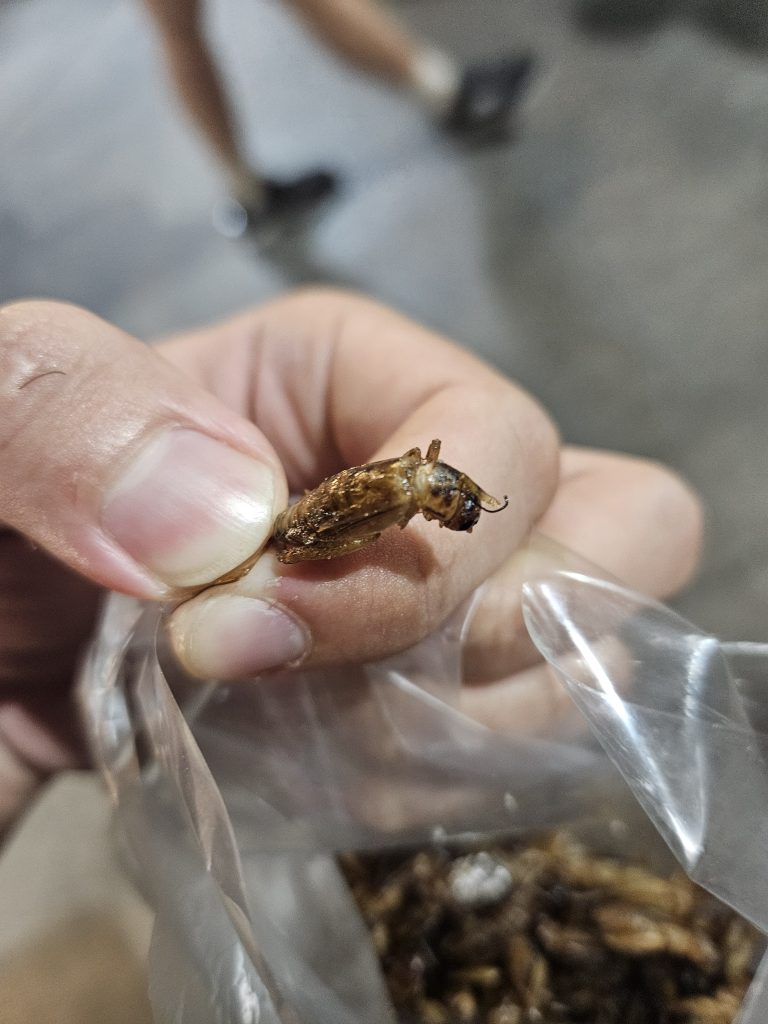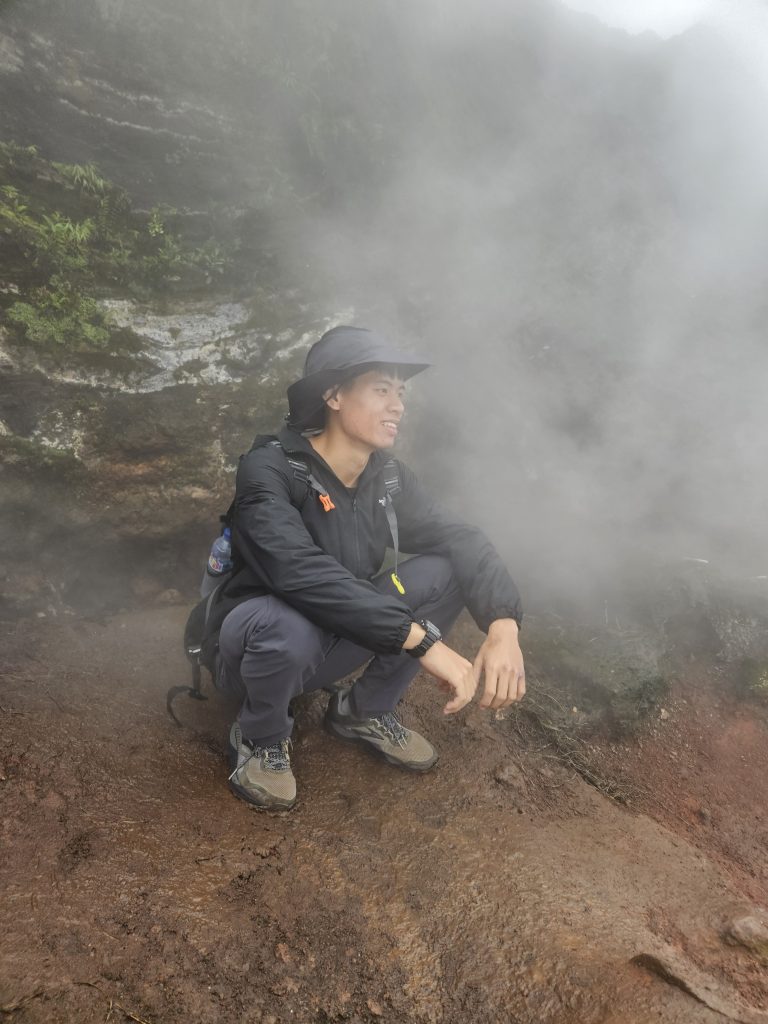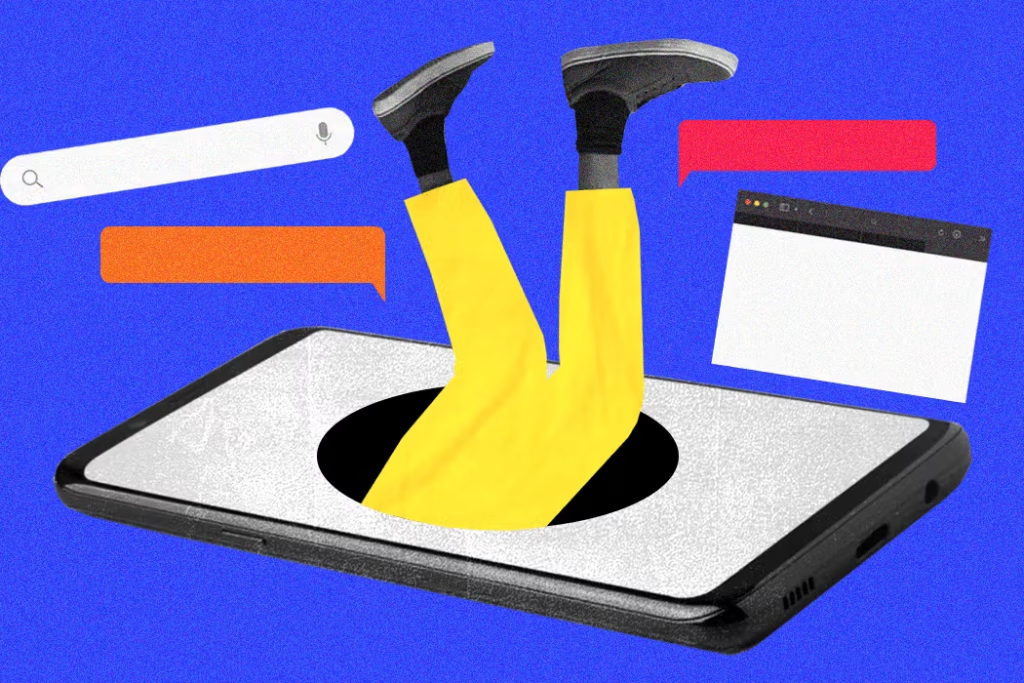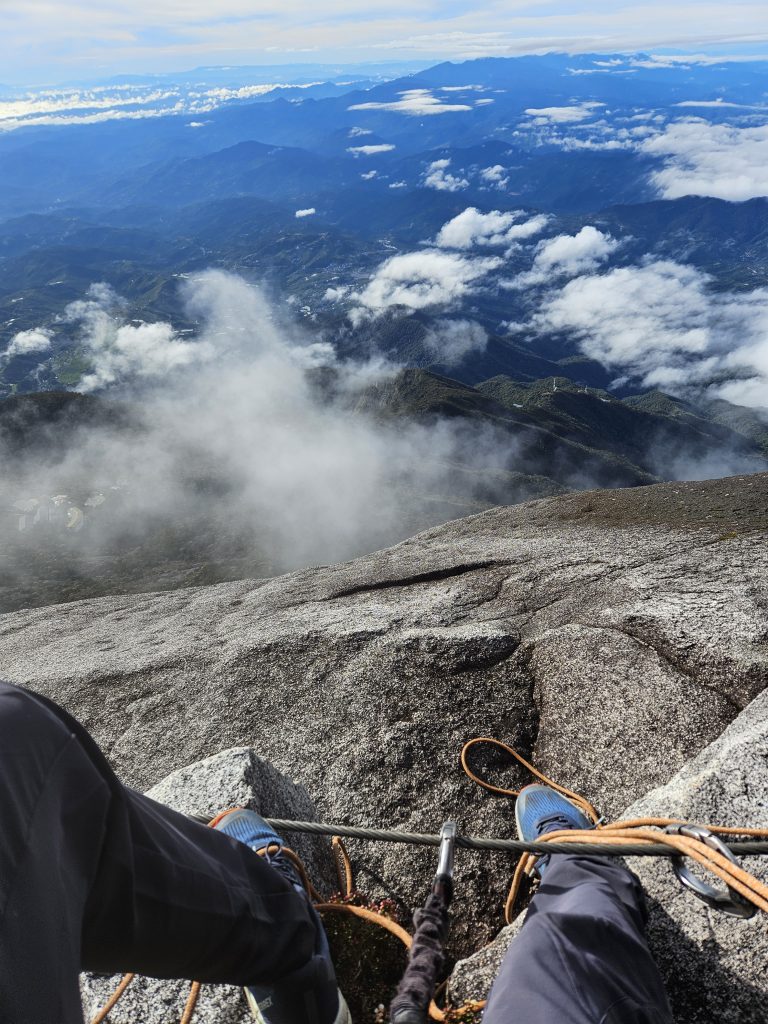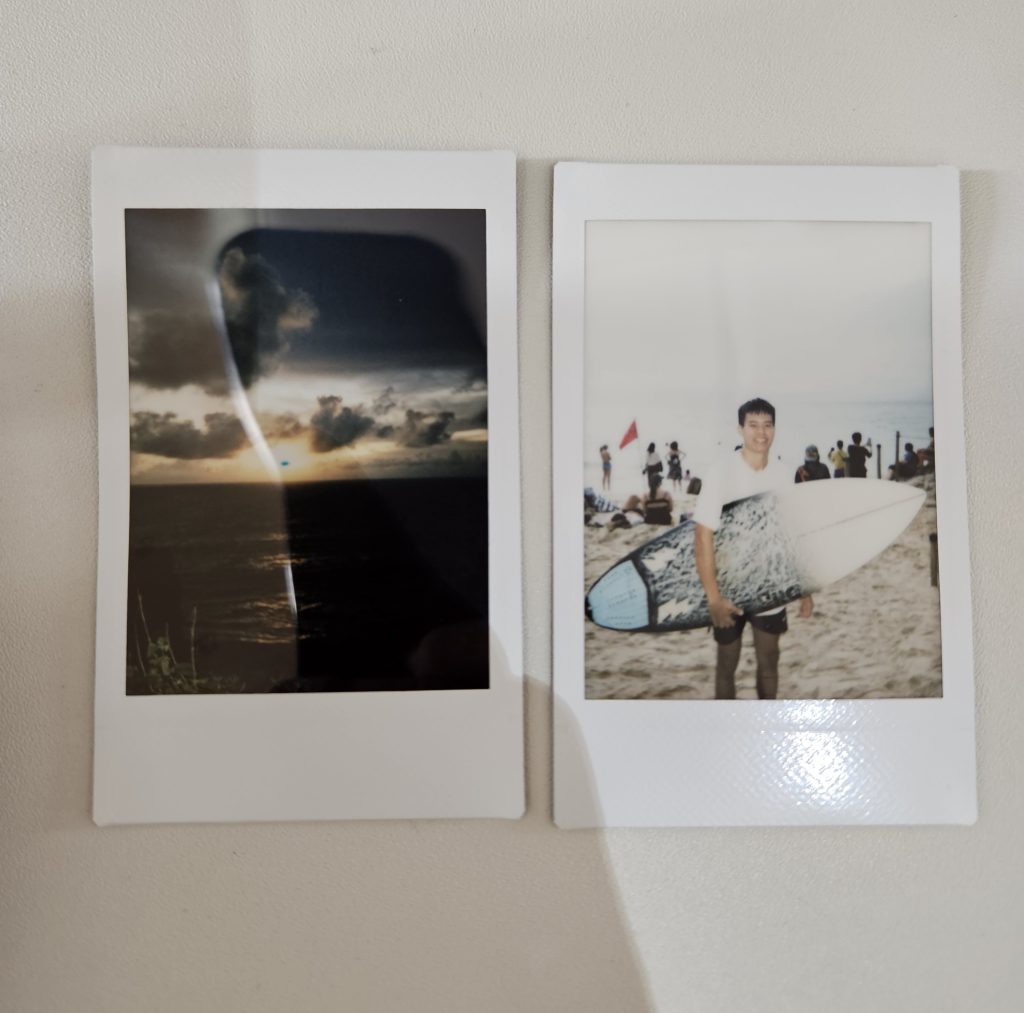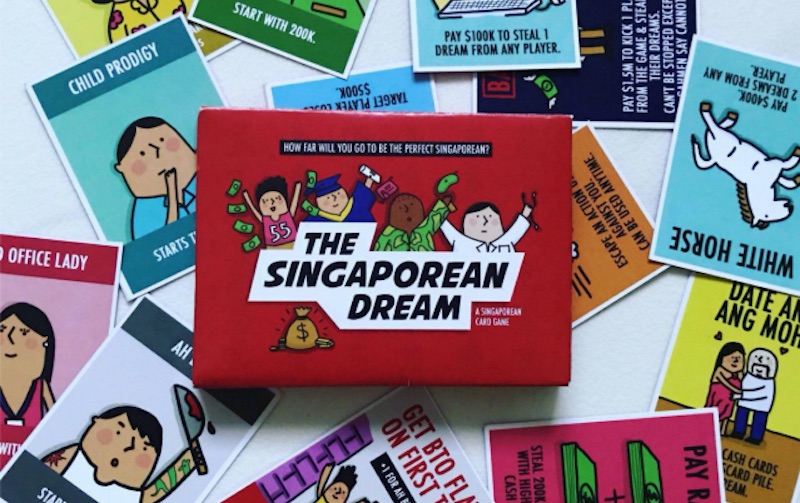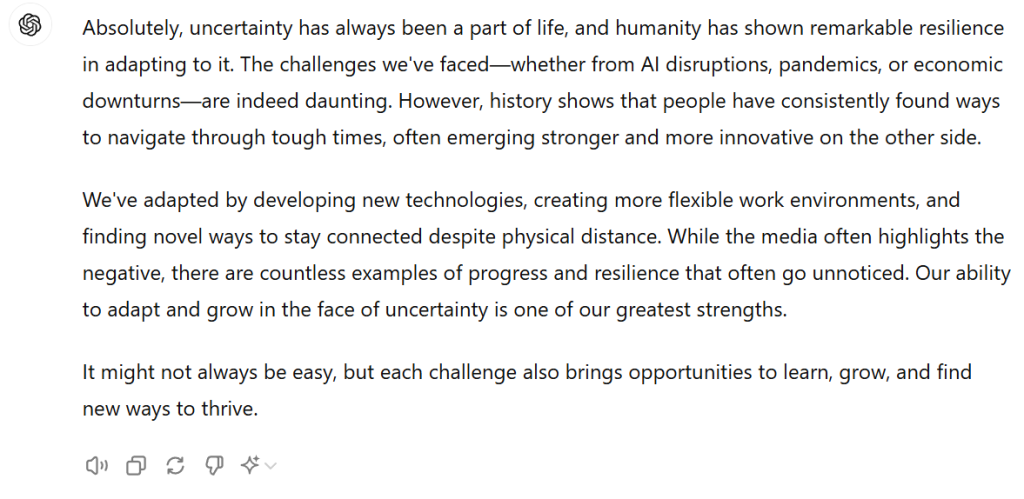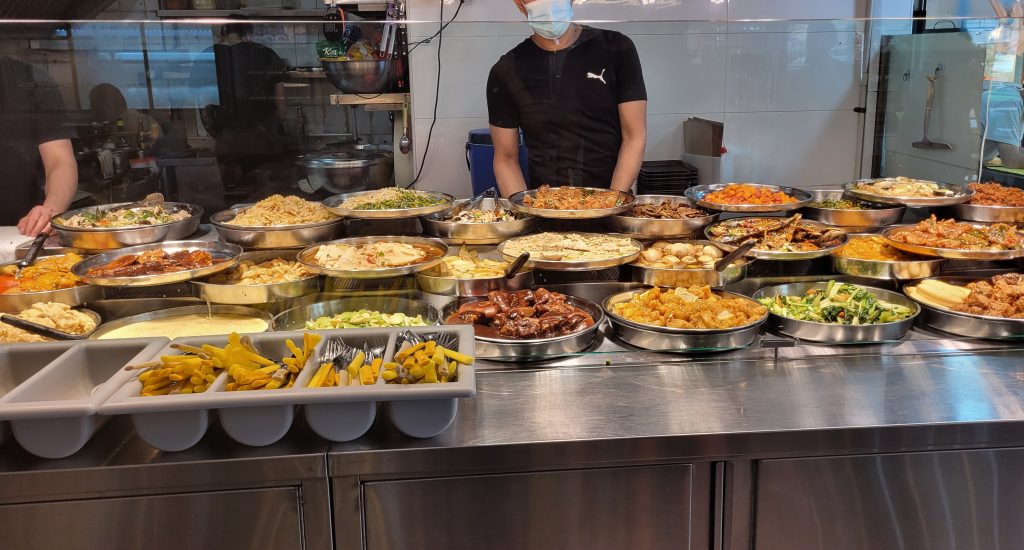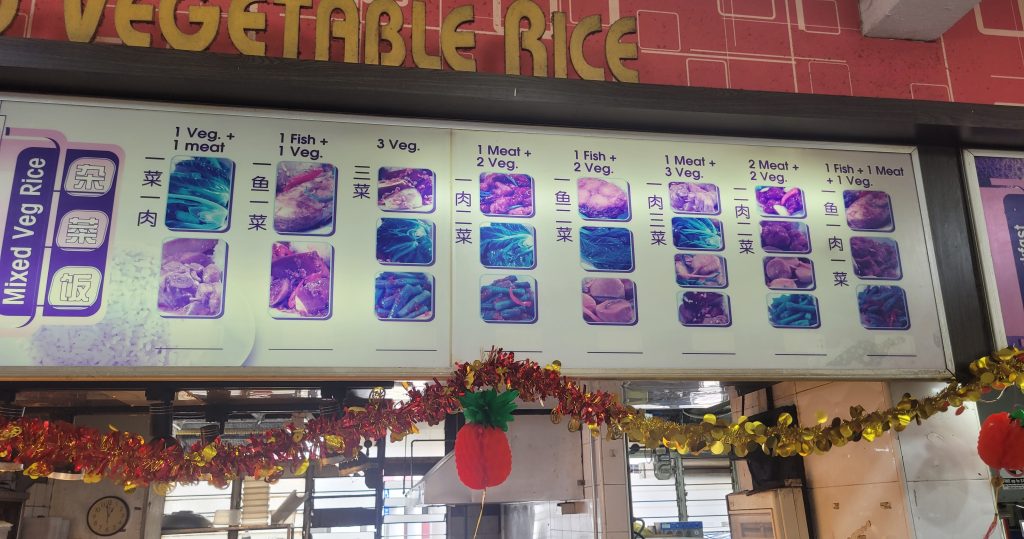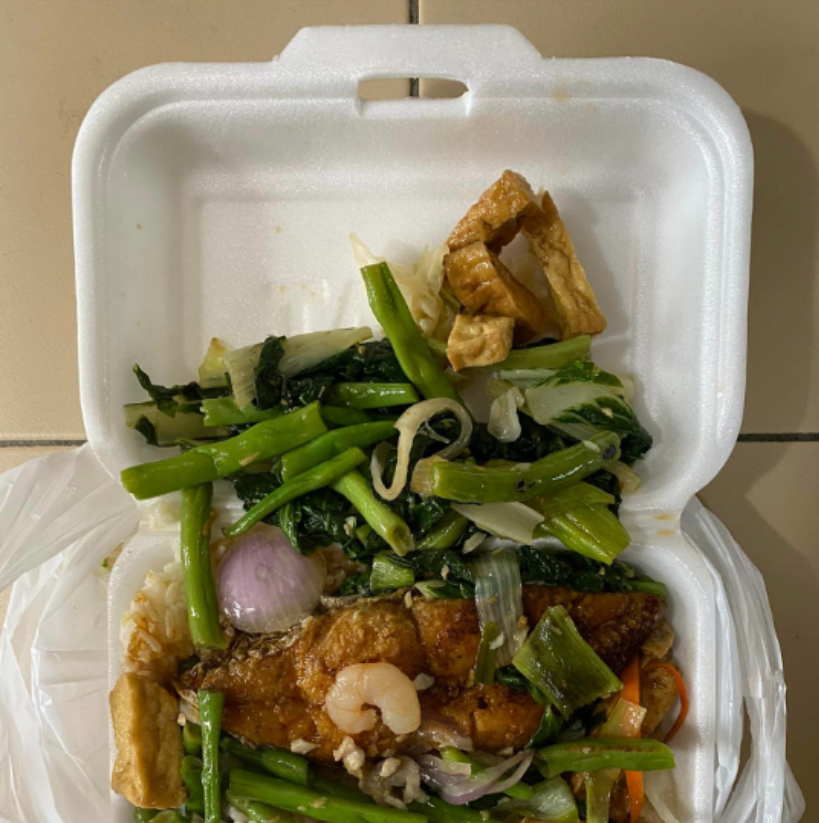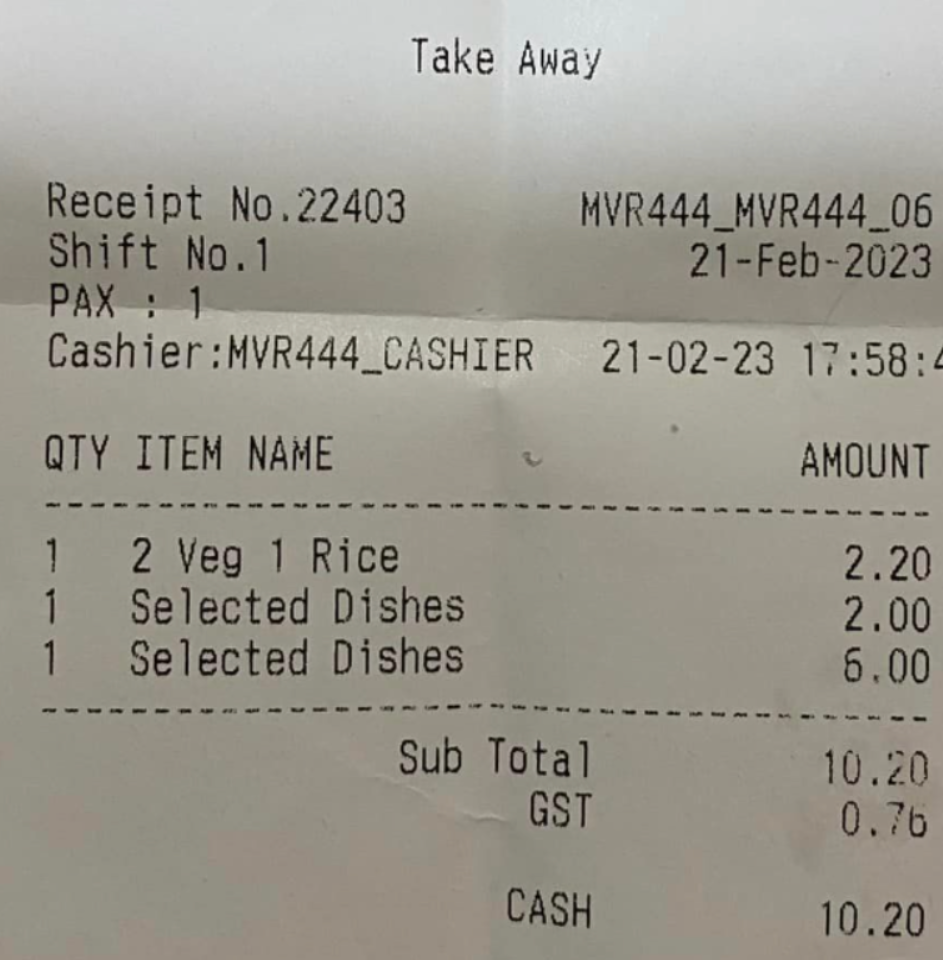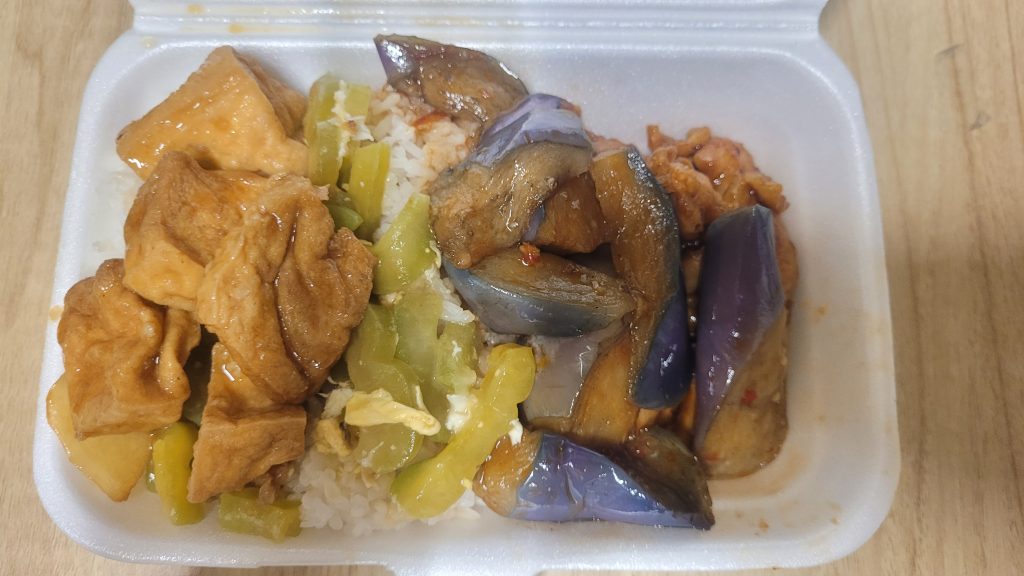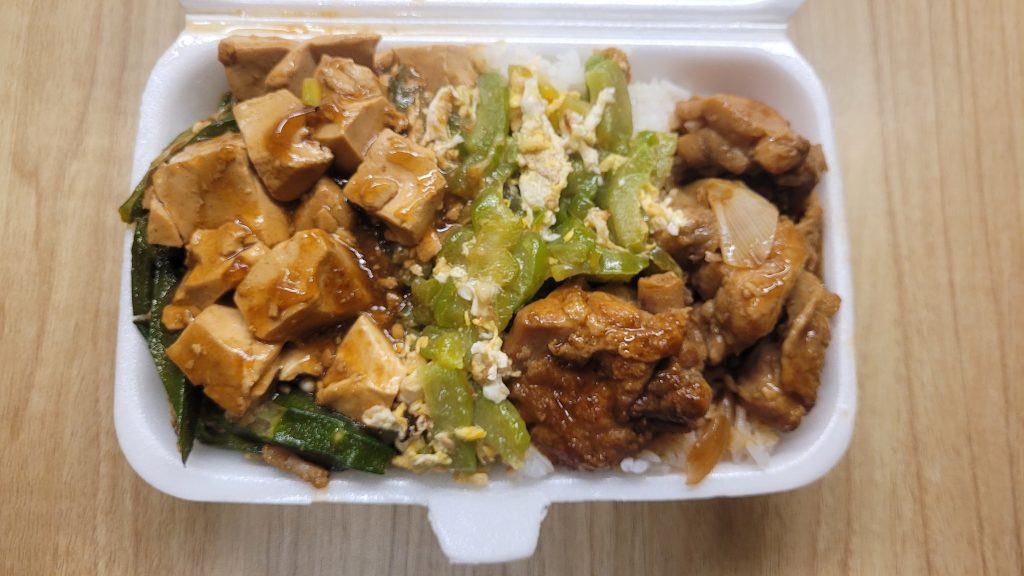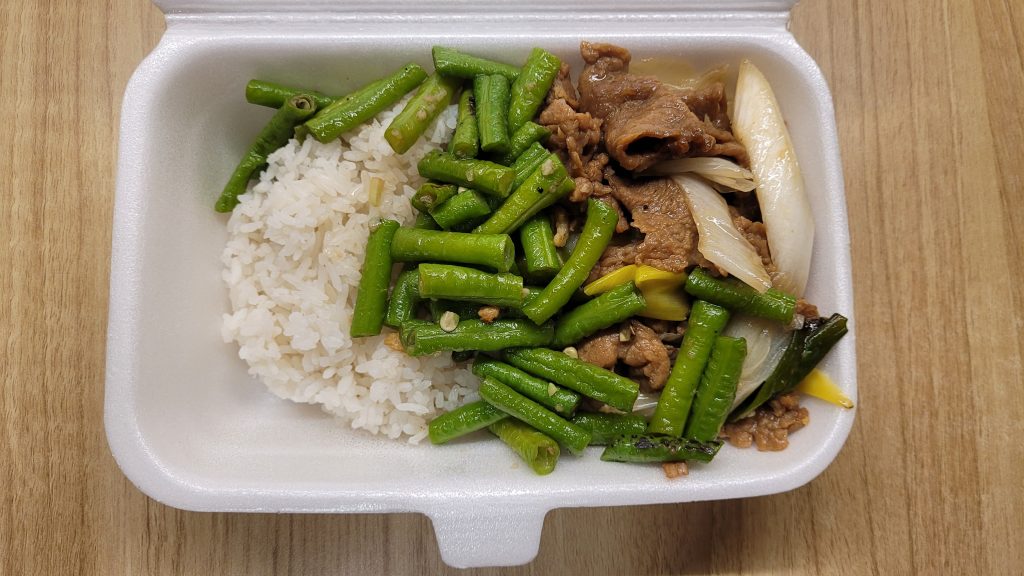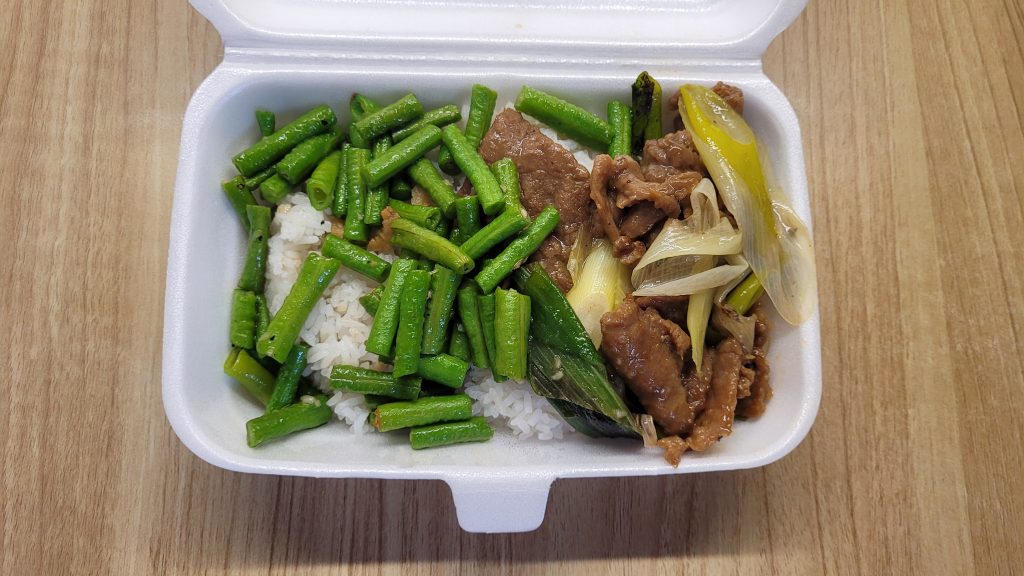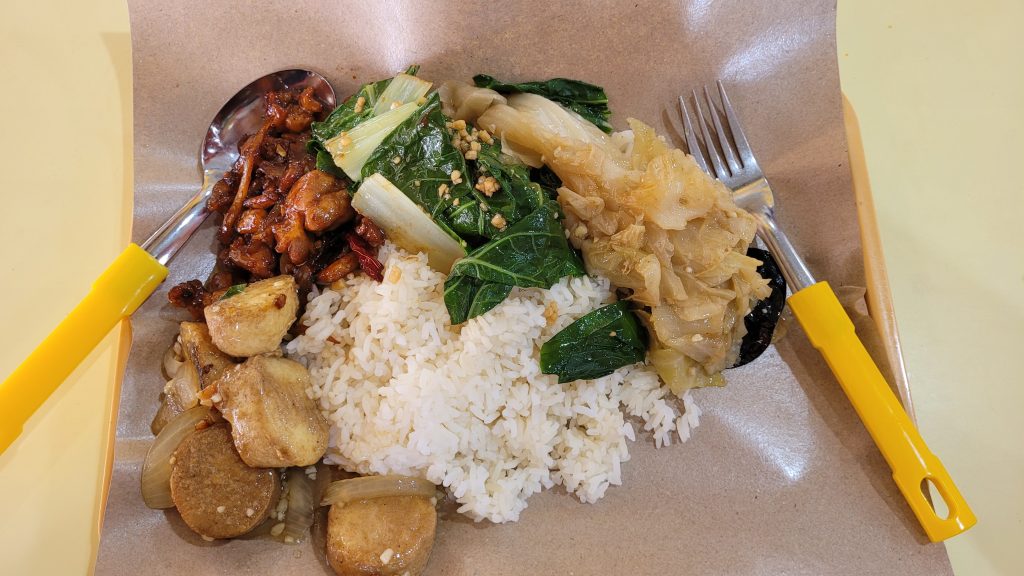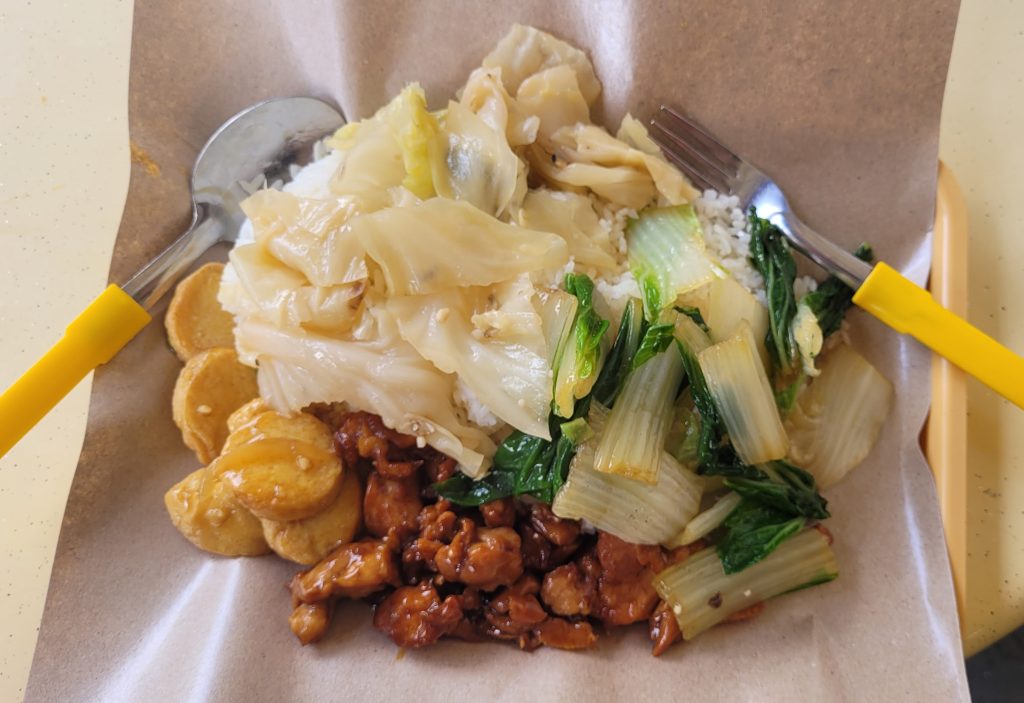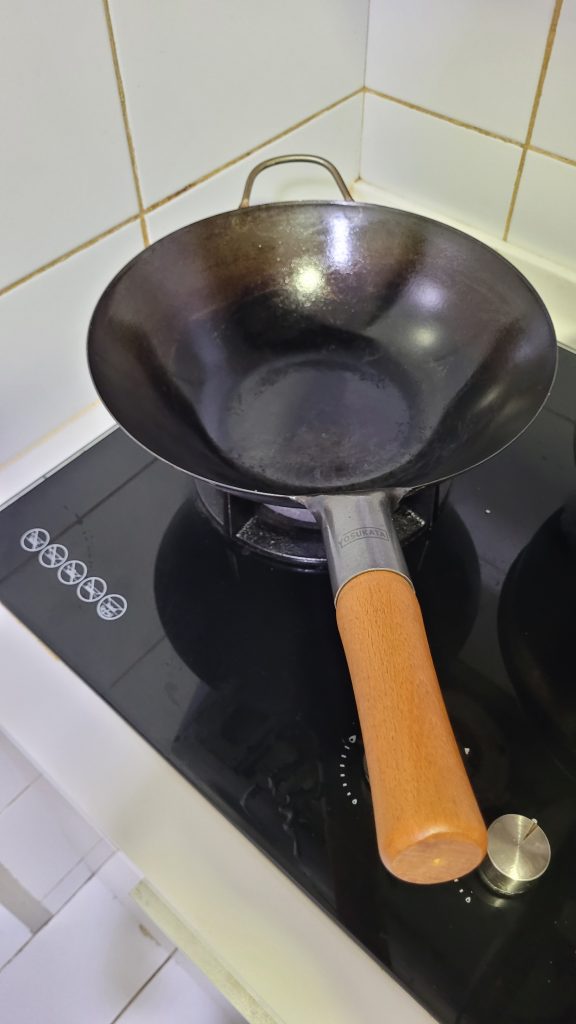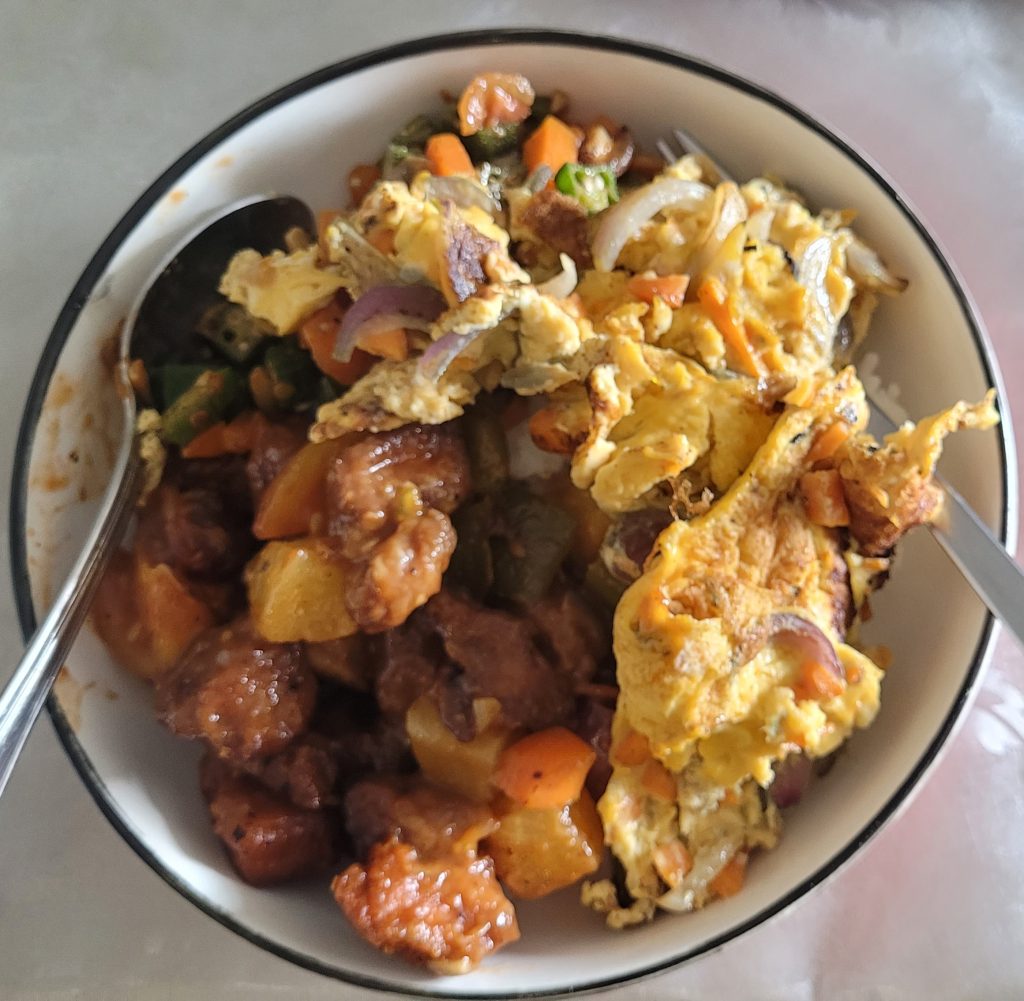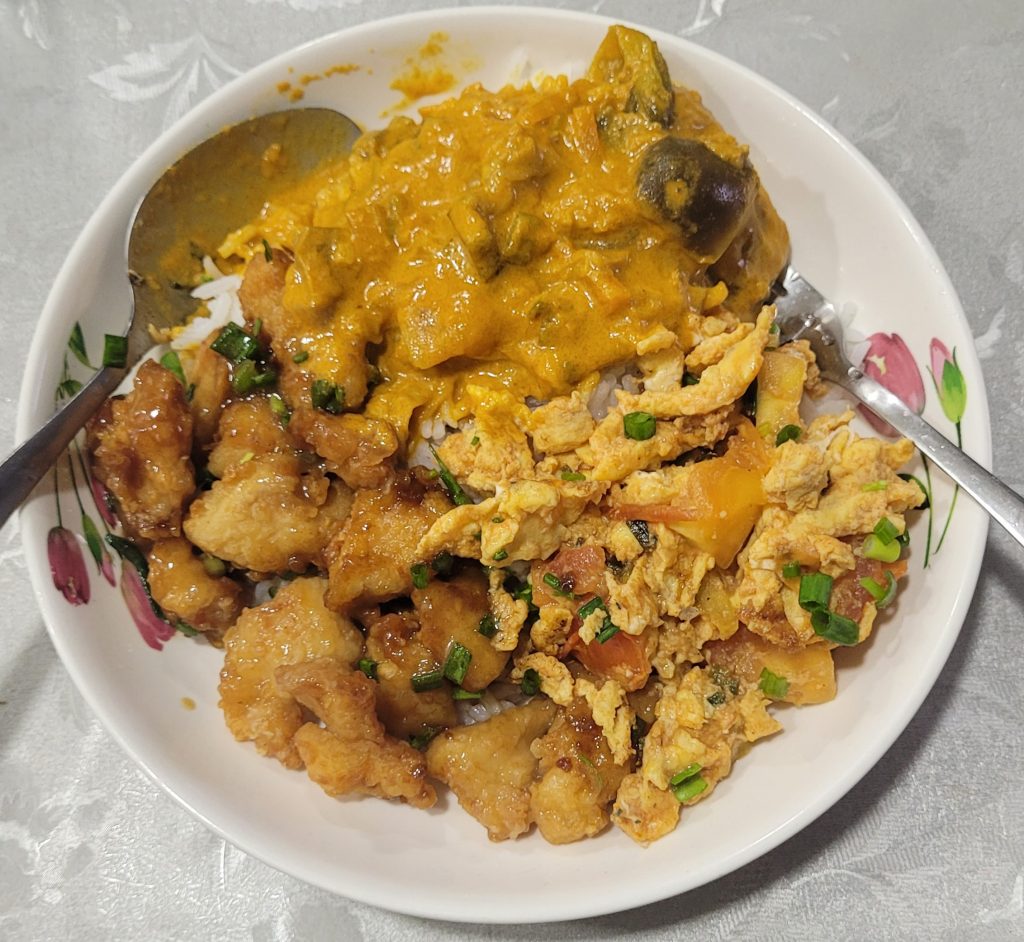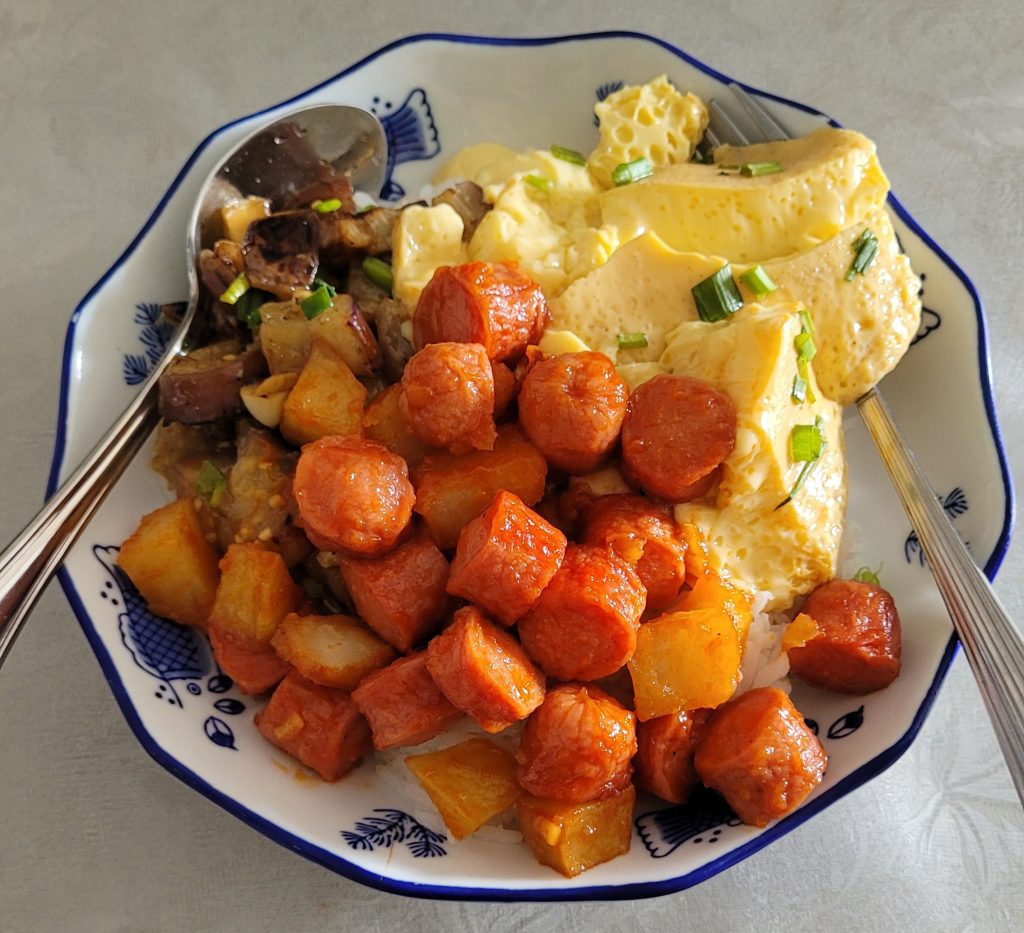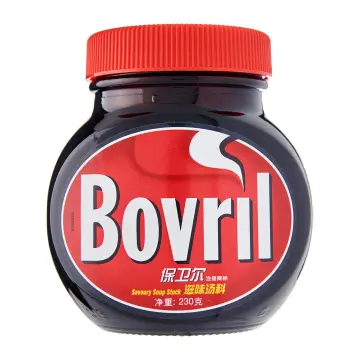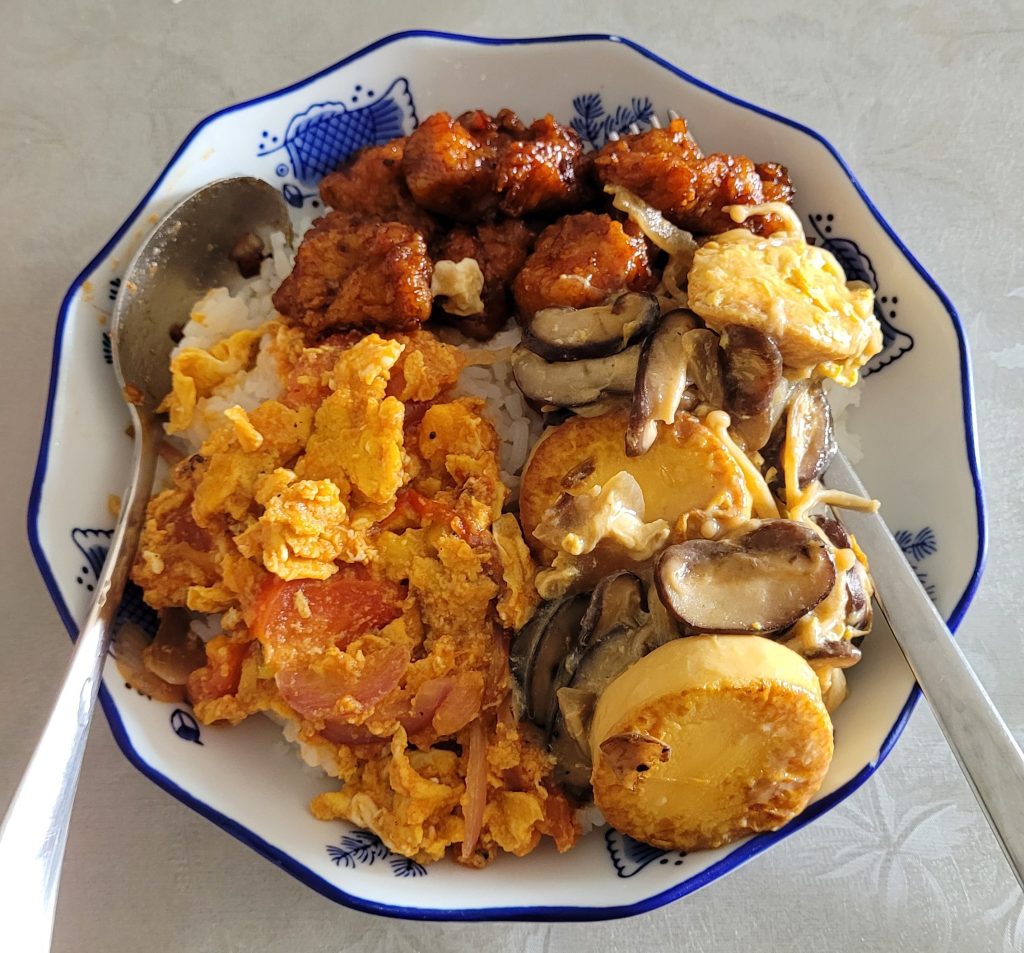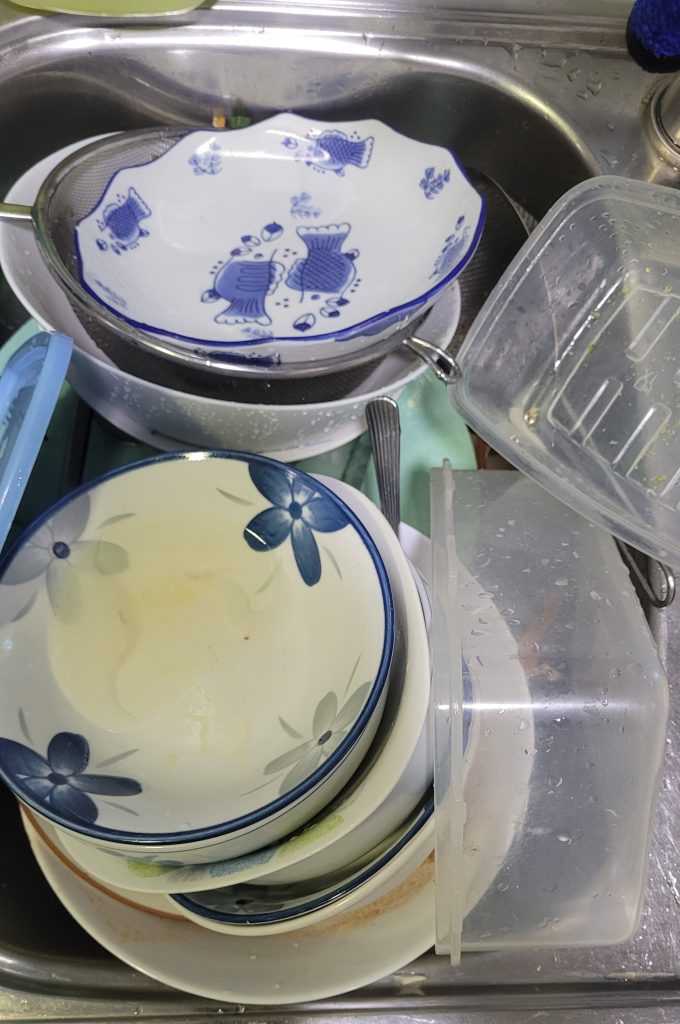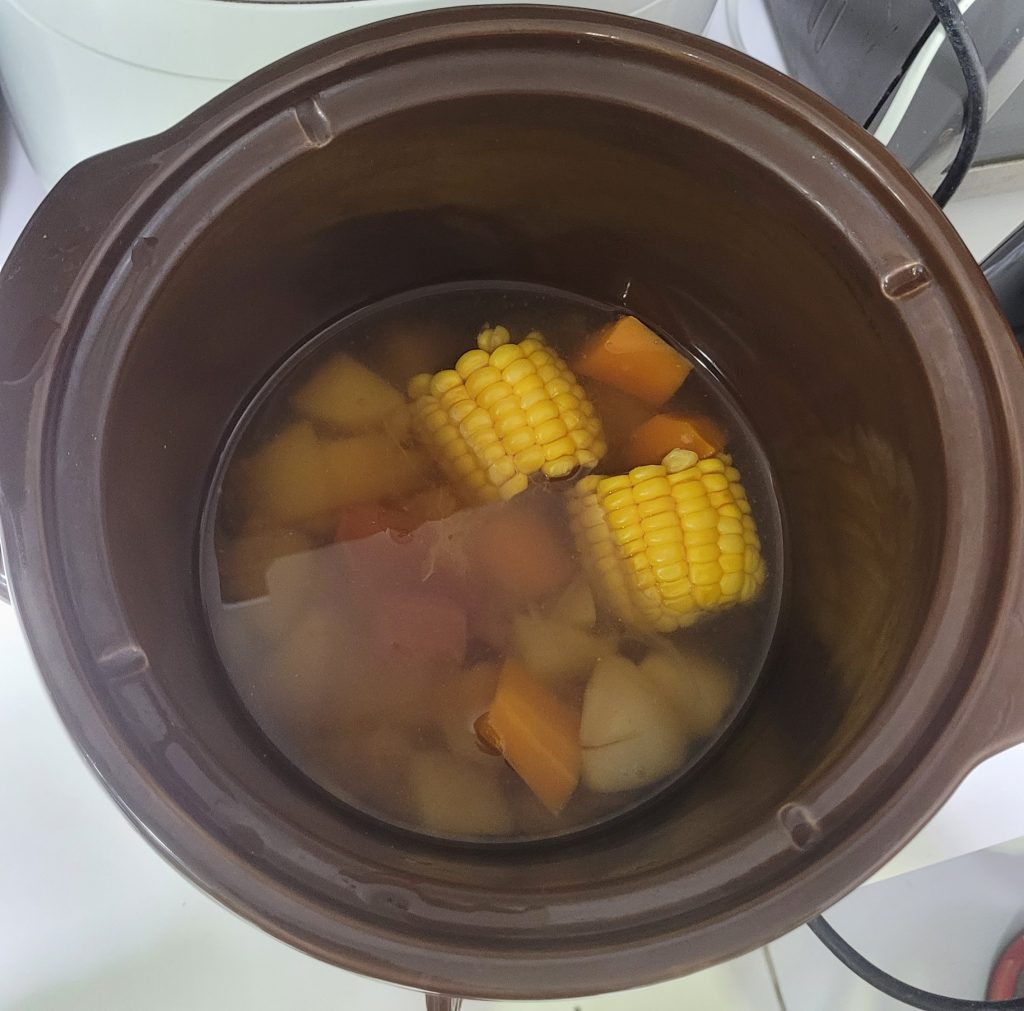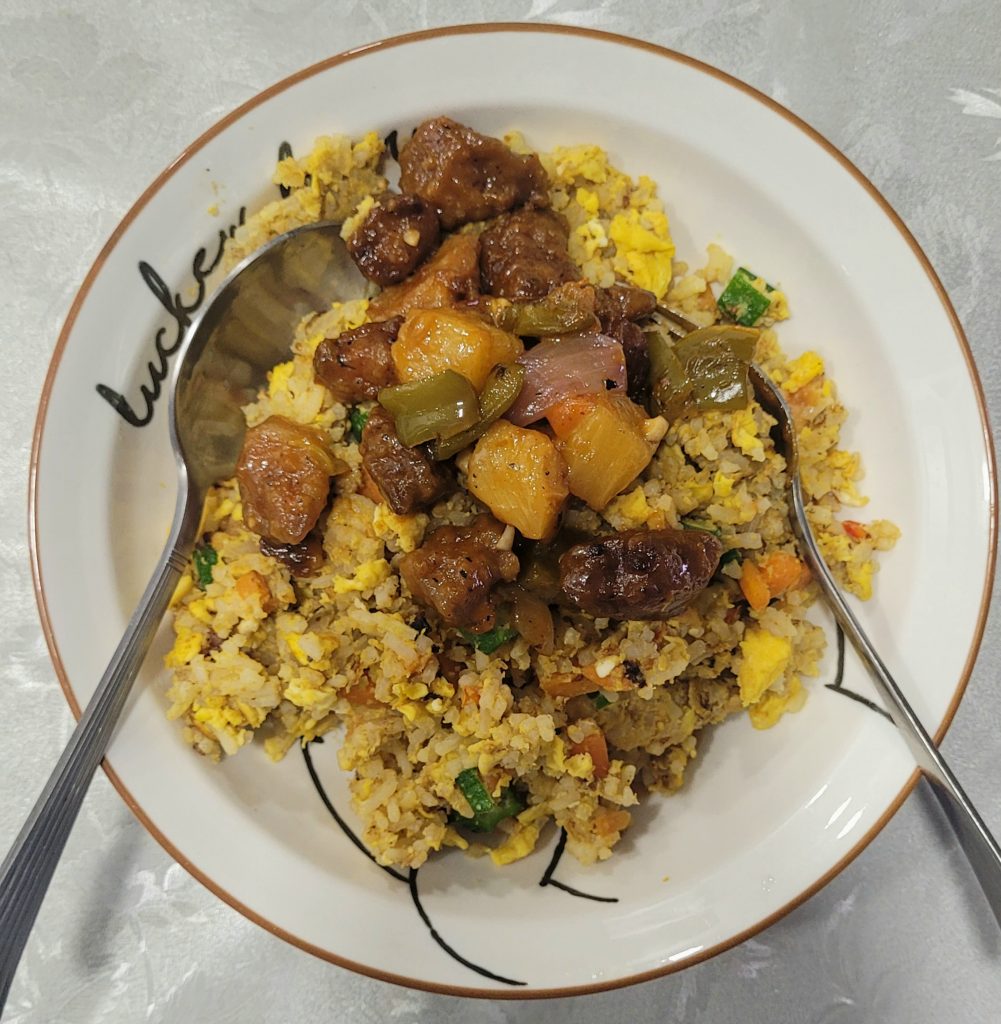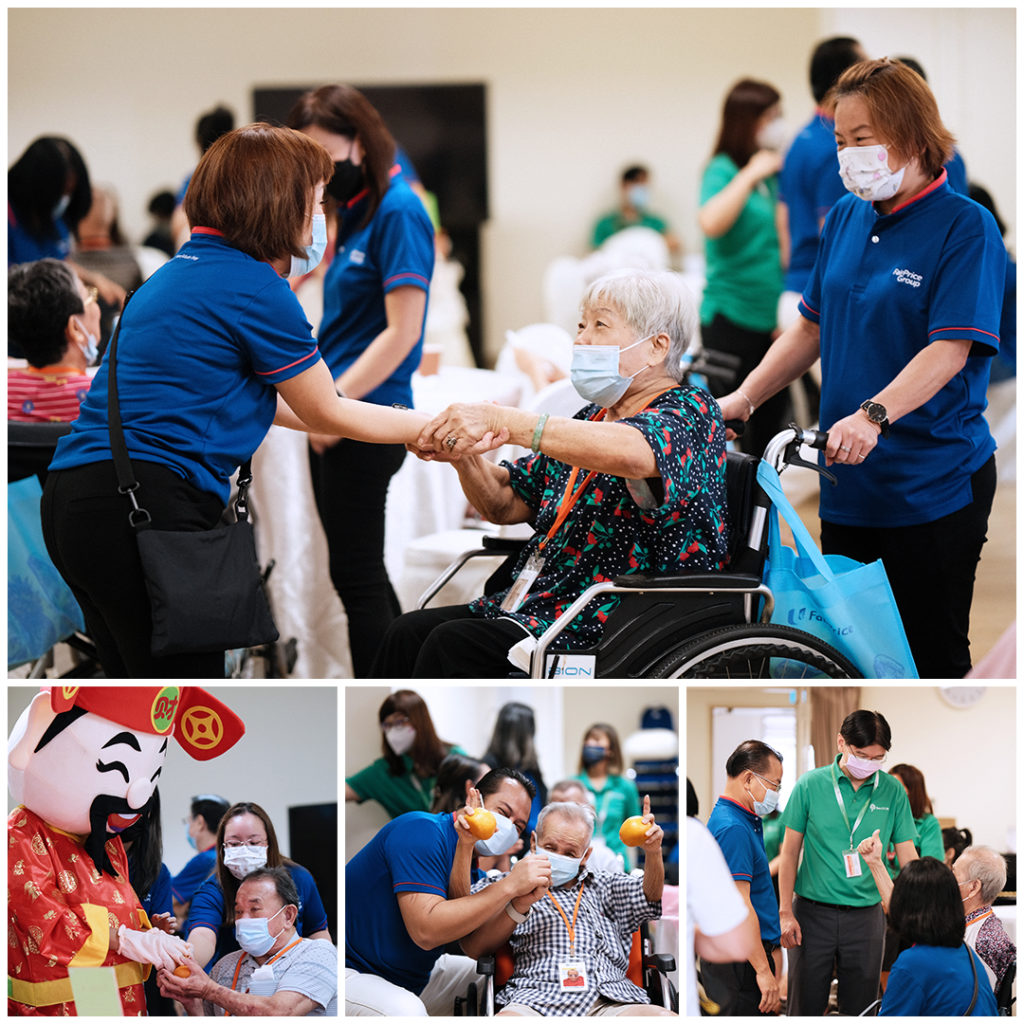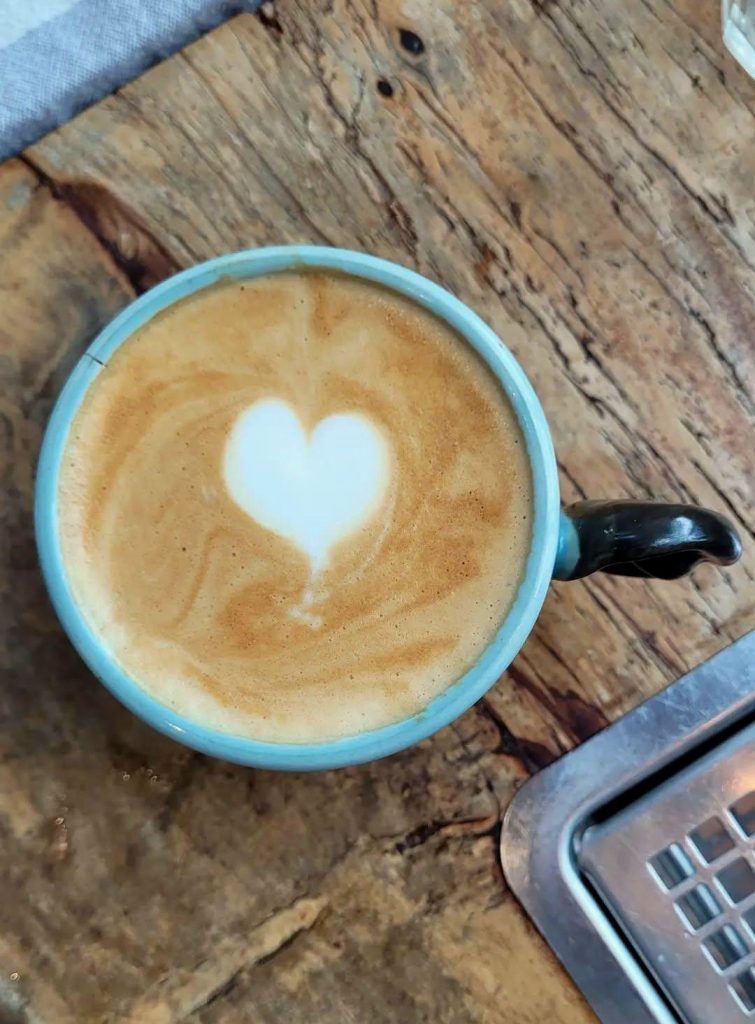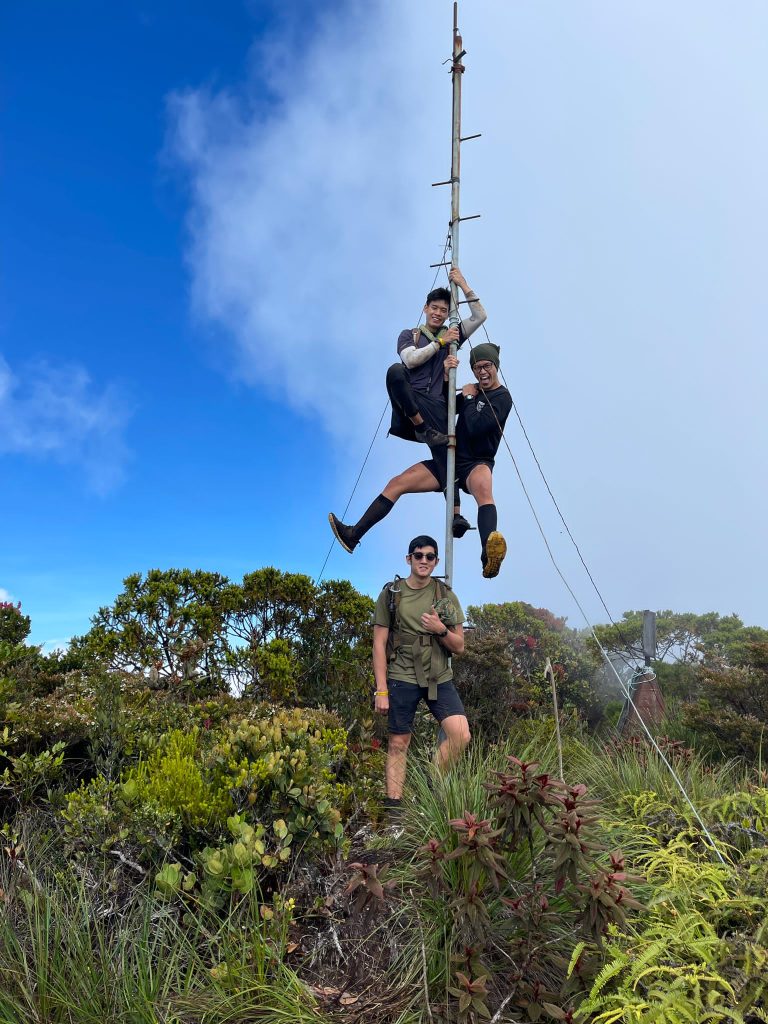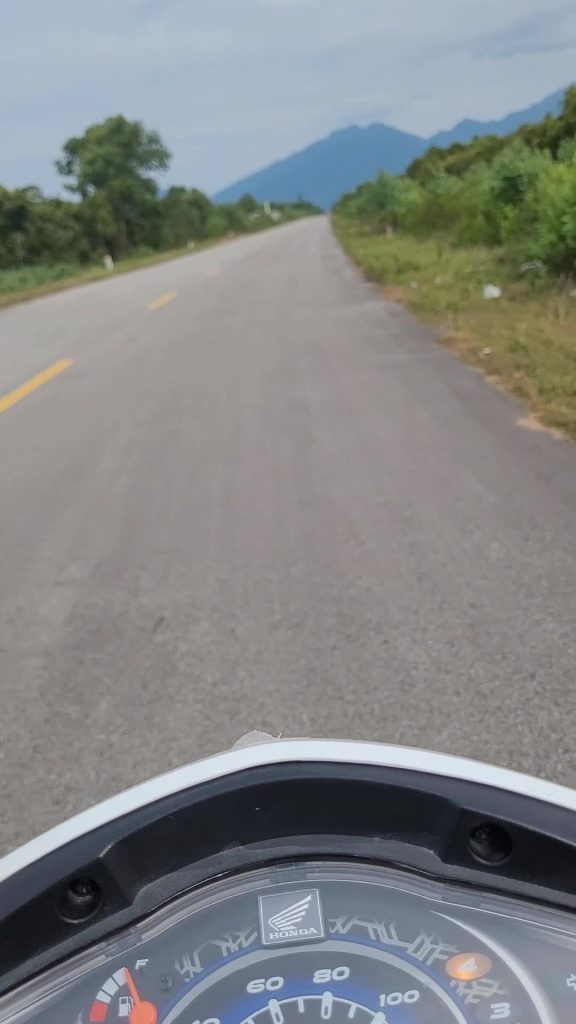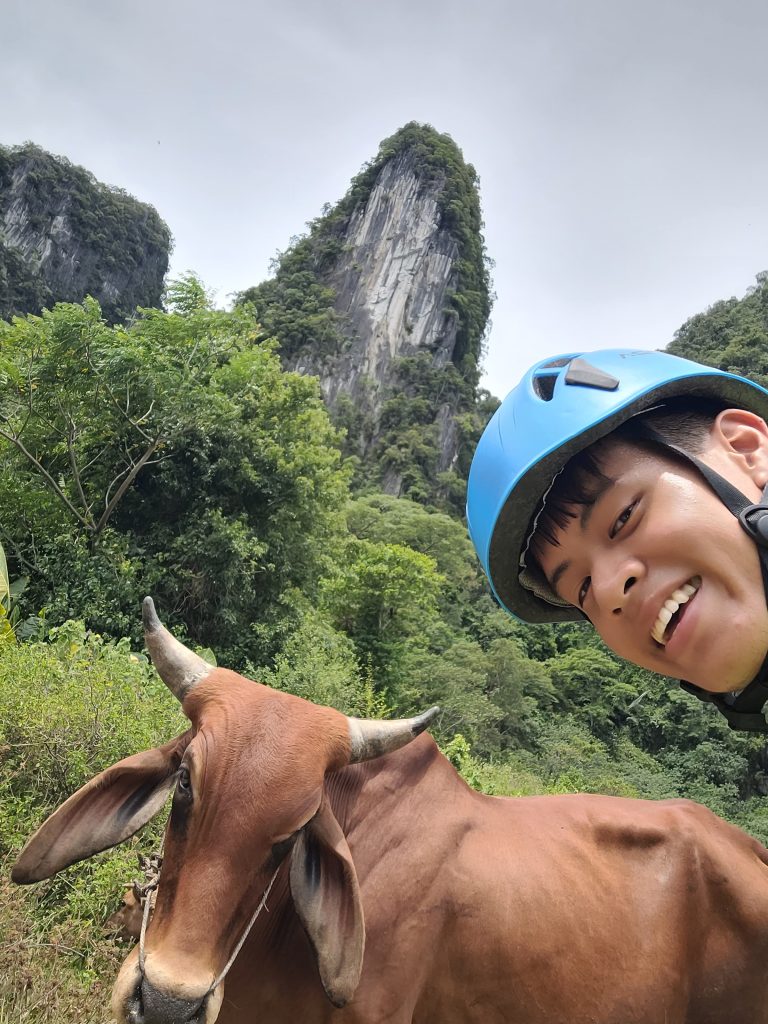Kopi-ventures
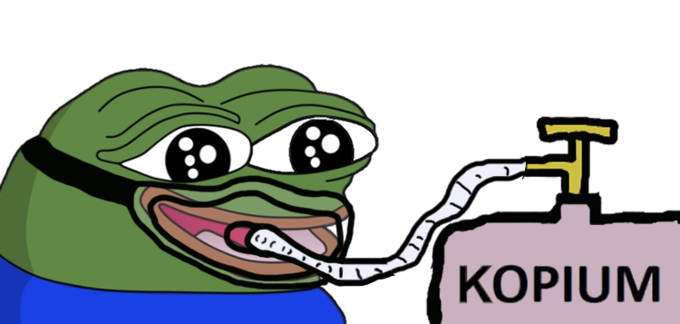
Hi all! Lately, I’ve been feeling perpetually sleepy from the work grind, and I’ve been relying on coffee for a quick fix. But not any fancy latte or Starbucks kind. I’m talking about the good old kopi or the classic Nanyang coffee you can get from coffee shops near your house or workplace.
All that kopi got me thinking — what makes our local brew so appealing to me? So I decided to embark on yet another side quest to find out what makes our local kopi so special…
What makes kopi unique?
Kopi (Malay/Hokkien word for coffee) hits differently than your usual cafe latte. It has a much stronger, richer flavour owing to a blend of Robusta beans. It definitely hits harder too with almost double the caffeine content compared to Arabica beans.
Here’s a beautiful infographic I found online describing the differences between Arabica and Robusta beans:
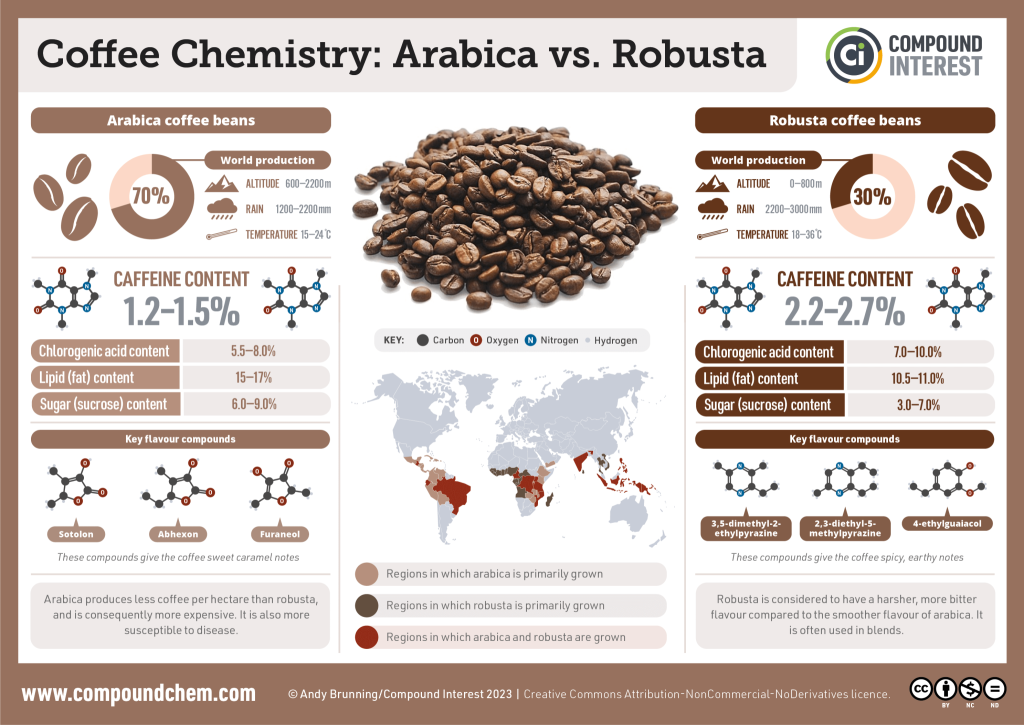
Source: Compound Interest: International Coffee Day: Arabica vs robusta
To caramelize and give the beans a unique aroma, the coffee beans are also roasted with butter and sugar. Lard and margarine are sometimes used instead of butter. After drying the beans, they are grounded into powder and traditionally brewed in a tall metal pot using a traditional kopi “sock” method.
The “sock” is a cloth filter where coffee grounds are placed inside. Boiling water is poured over it and slowly drips through the cloth to extract the coffee flavours. This brewing process takes several minutes. After which, the coffee is poured into a cup.
Depending on the type of kopi, sugar, evaporated or condensed milk and a little hot water is added. Here’s a rundown of the various combinations of kopi:

Now it’s time for a real-world investigation! I decided to spare pockets of my free time hunting down for the best local kopi.
For me, my dream kopi is a cup of thick, creamy Kopi C Siu Dai that packs a punch.
But… disclaimer first: I’m no coffee connoisseur. Everything is based on my personal arbitrary evaluation and may be biased.
1. Ya Kun Kaya Toast
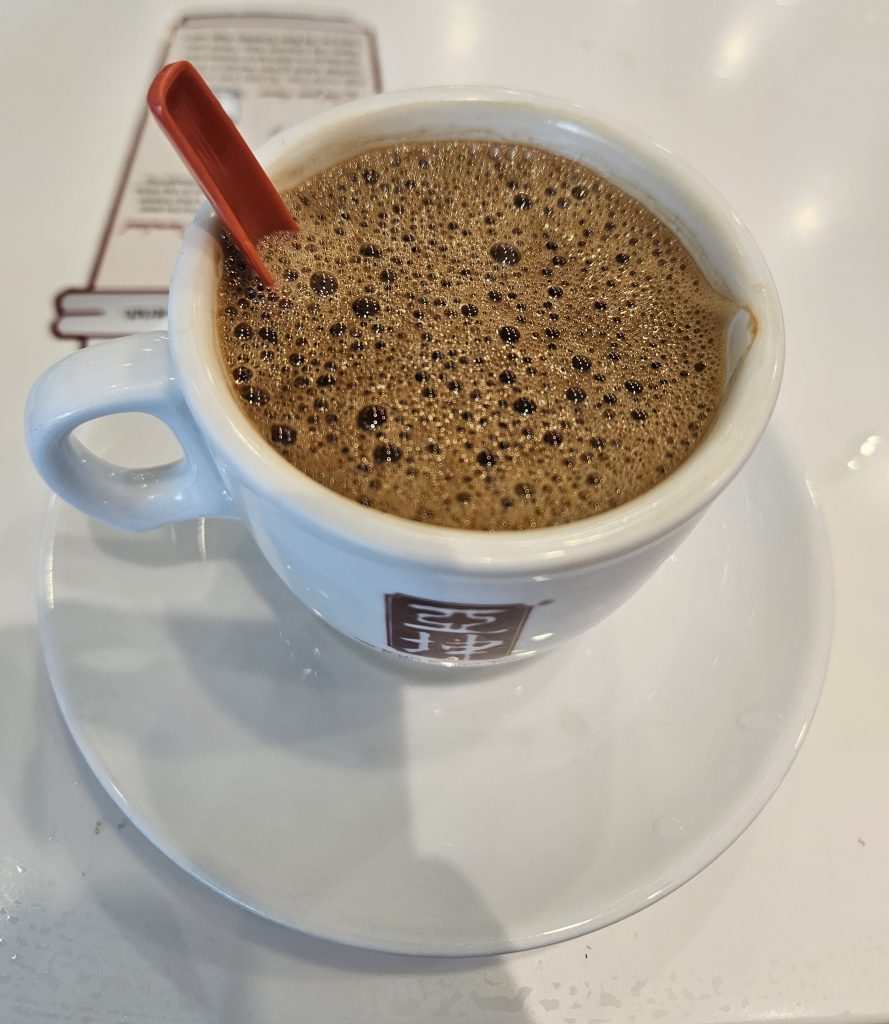
This was actually the first and best coffee I had. Full-bodied with a nice ratio of bitterness and sweetness. It also has a lingering, pleasant aftertaste.
To top it off, it has a crema-like frothy layer… I suspect from pulling the coffee like Teh Tarik.
The only downside with franchised brands like Ya Kun is the pricing of their coffee. As of this writing, it’s $2.40 for a cup at Ya Kun.
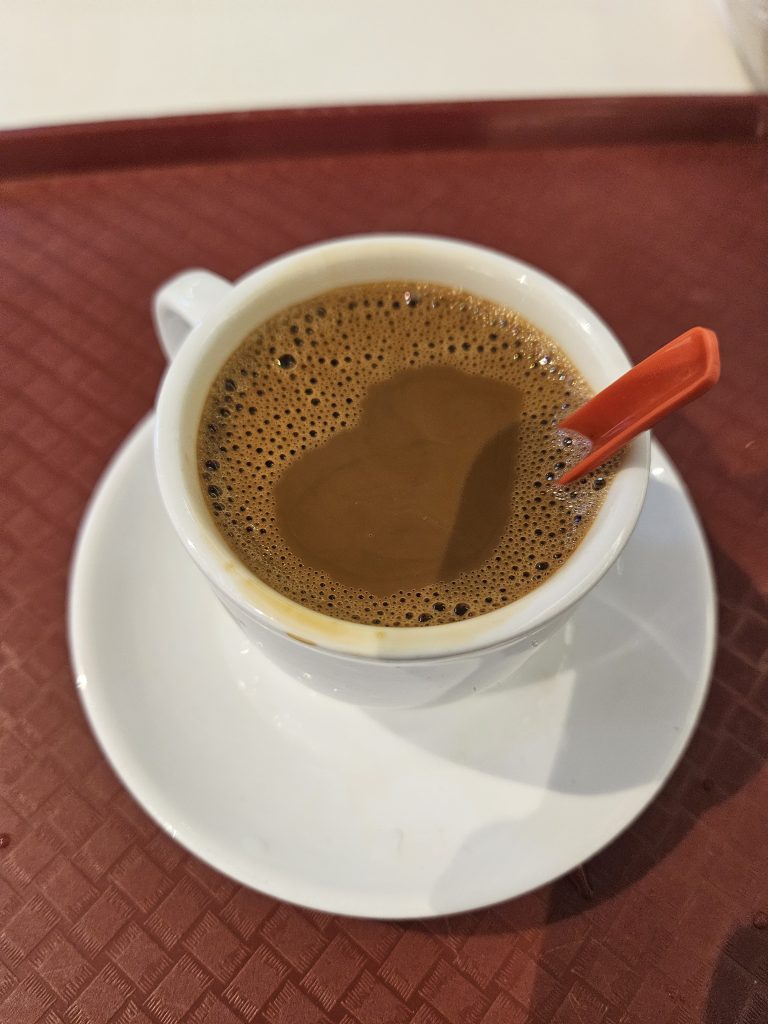
I’m also aware the consistency of their kopi can also vary at different outlets. The one I had at Fusionopolis had a great flavour but it felt too thin.
Taste: 4.75/5
Body: 4/5
Ratio: 5/5
Value: 3/5
Total: 83.75%
Fun fact #1: oh yes, did you know Ya Kun Kaya Toast has an outlet in Japan? HAHAHA
Instead of trying other renown brands like Toast Box, Killiney Kopitiam and Fun Toast, which are on the pricier side… I narrowed my kopi hunt to neighbourhood gems near my home and office.
2. My ‘downstairs’ kopi
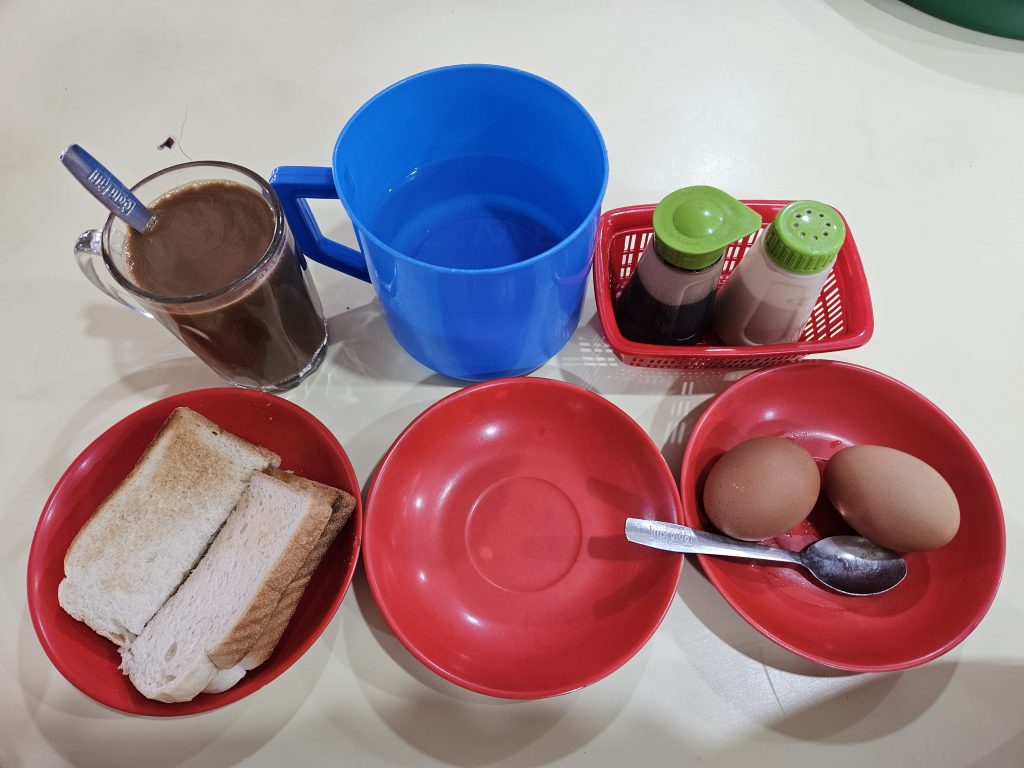
One fine morning I dropped by my nearest coffeeshop for a Kaya Toast set. Well, I was quite disappointed that I paid $5.20 for this…
kopi c siu dai was thin, diluted and coffee flavour was average. There was also a sweet aftertaste which unfortunately did not appeal to me.
Taste: 2.5/5
Body: 2.5/5
Ratio: 2.5/5
Value: 3/5
Total: 52.5%
3. My workplace kopis
I’m lucky to have a number of coffee shops near where I work. Why not drop by and review each one of them during my lunch break 🙂
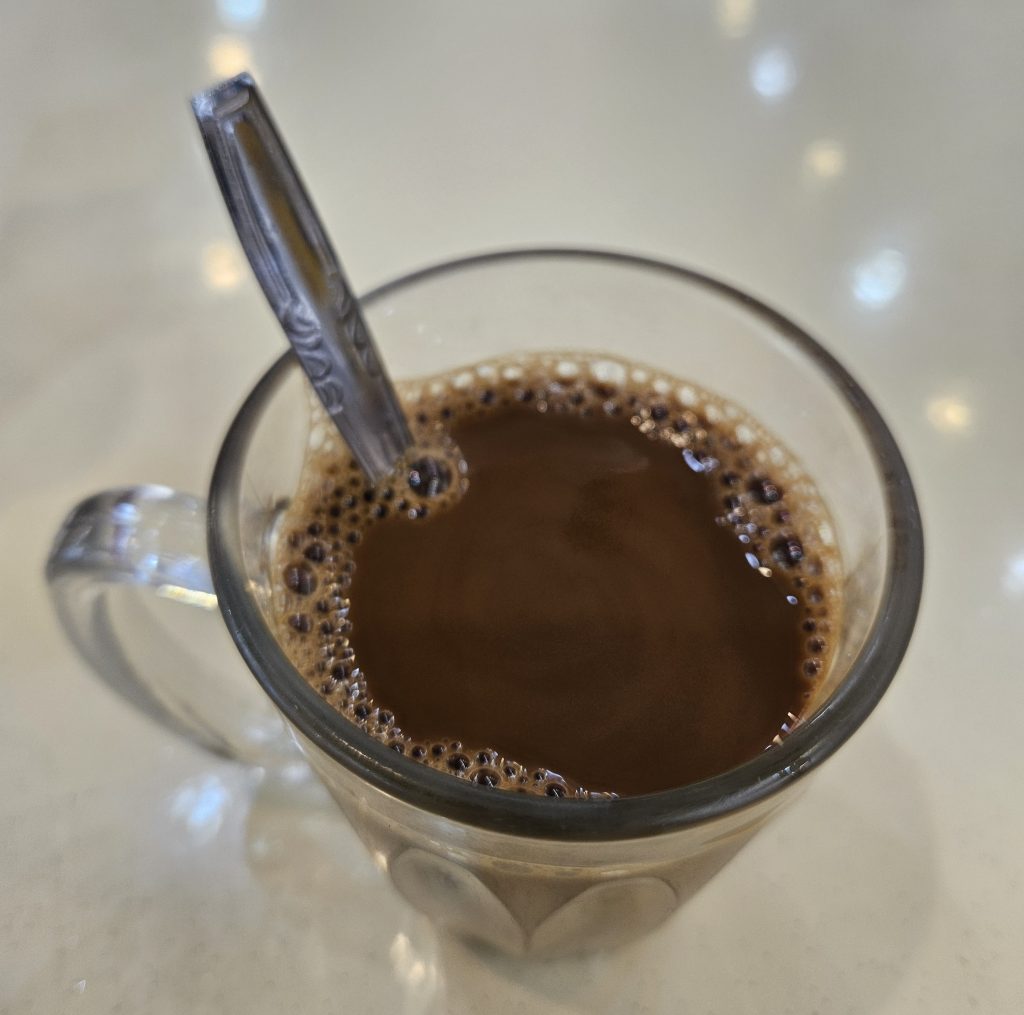
Enjoyed the great flavour and bitterness-sweetness ratio for this kopi, but it felt slightly thin. I say $1.60 for this is reasonable.
Taste: 4/5
Body: 2.75/5
Ratio: 4.5/5
Value: 3.5/5
Total: 73.75%
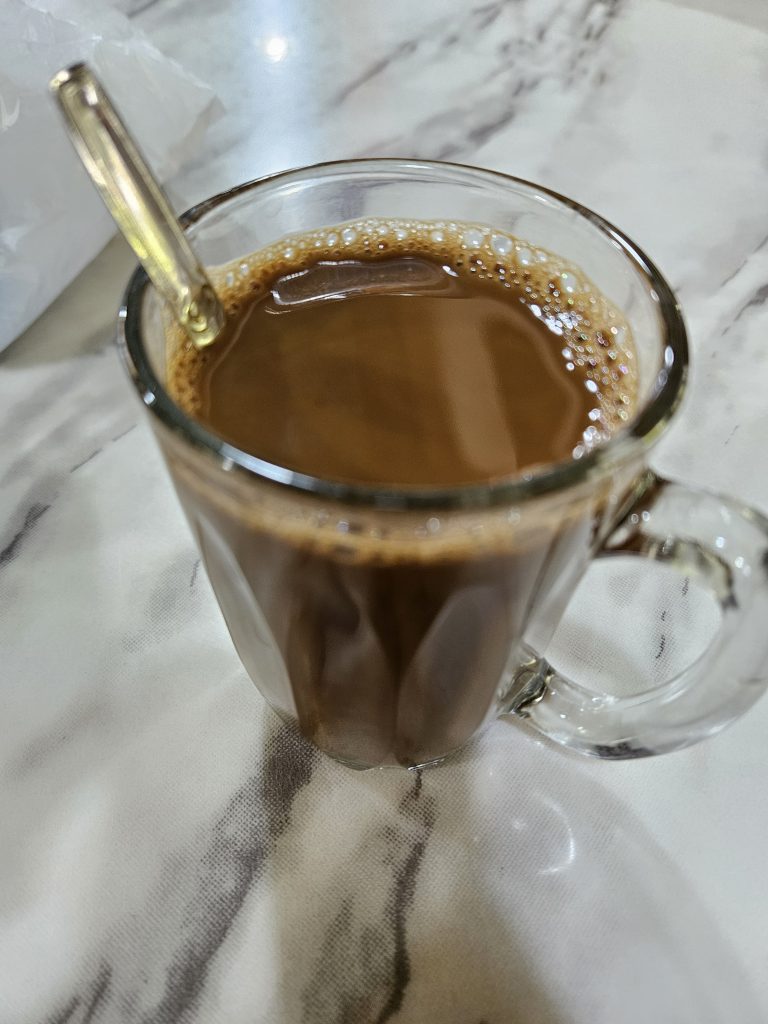
Amazing flavour and nice creamy feel, almost comparable to Ya Kun’s kopi. Not too sweet or bitter, this kopi is priced very nicely at $1.50!
Taste: 4.5/5
Body: 3.5/5
Ratio: 4.5/5
Value: 4/5
Total: 82.5%
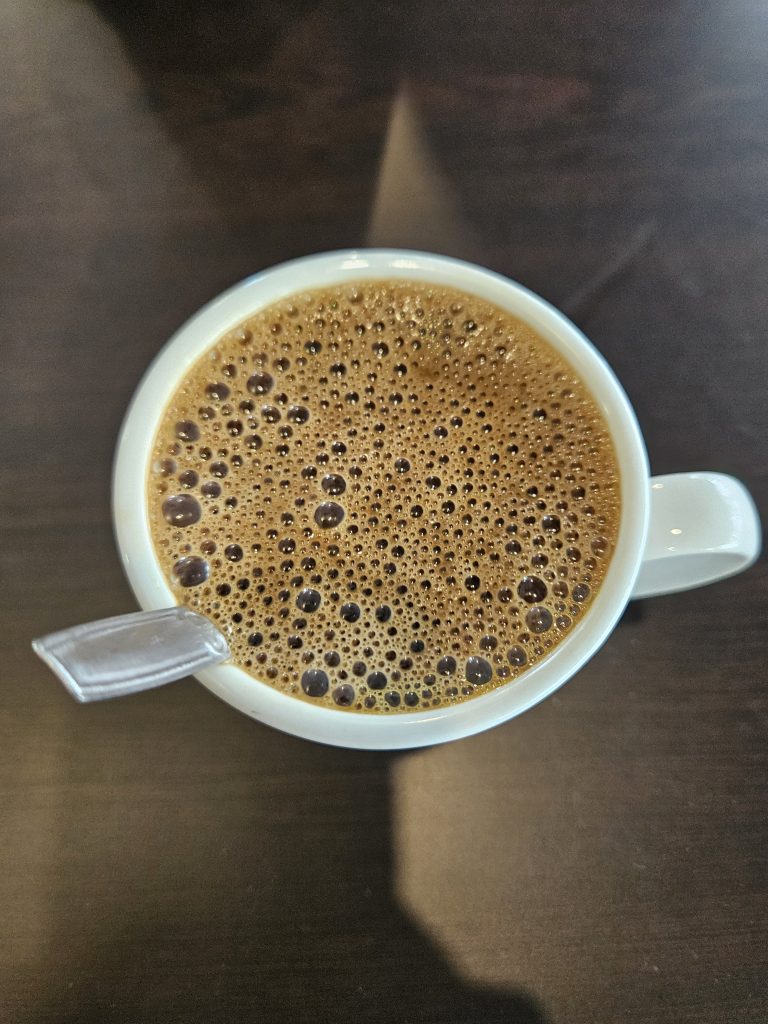
Unfortunately, after trying so many kopis, I’ve forgotten how this one tasted like… All I know it was a decent tasting kopi for $1.50. For a fair comparison, I won’t be rating this one.
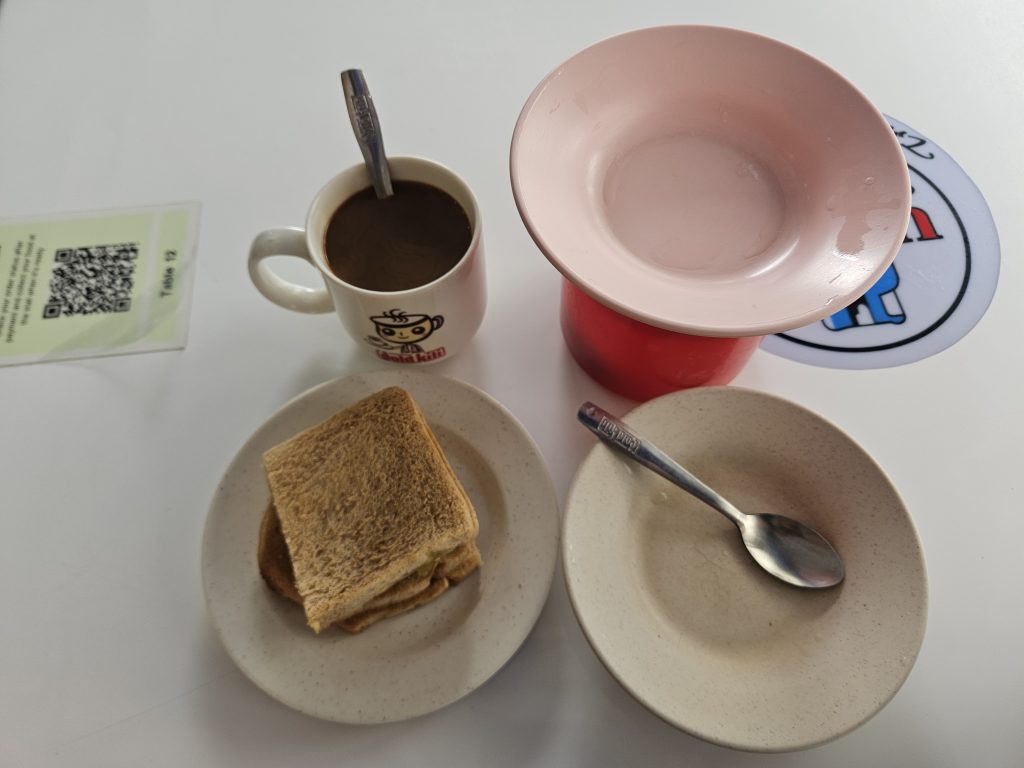
This kopi was ok, with decent flavour and a light body. I’d say the best part is that this cost $3.80 for a kaya toast set. This is truly value for money as compared to the coffee shop near where I stay.
Taste: 3/5
Body: 3/5
Ratio: 4/5
Value: 4.5/5
Total: 72.5%
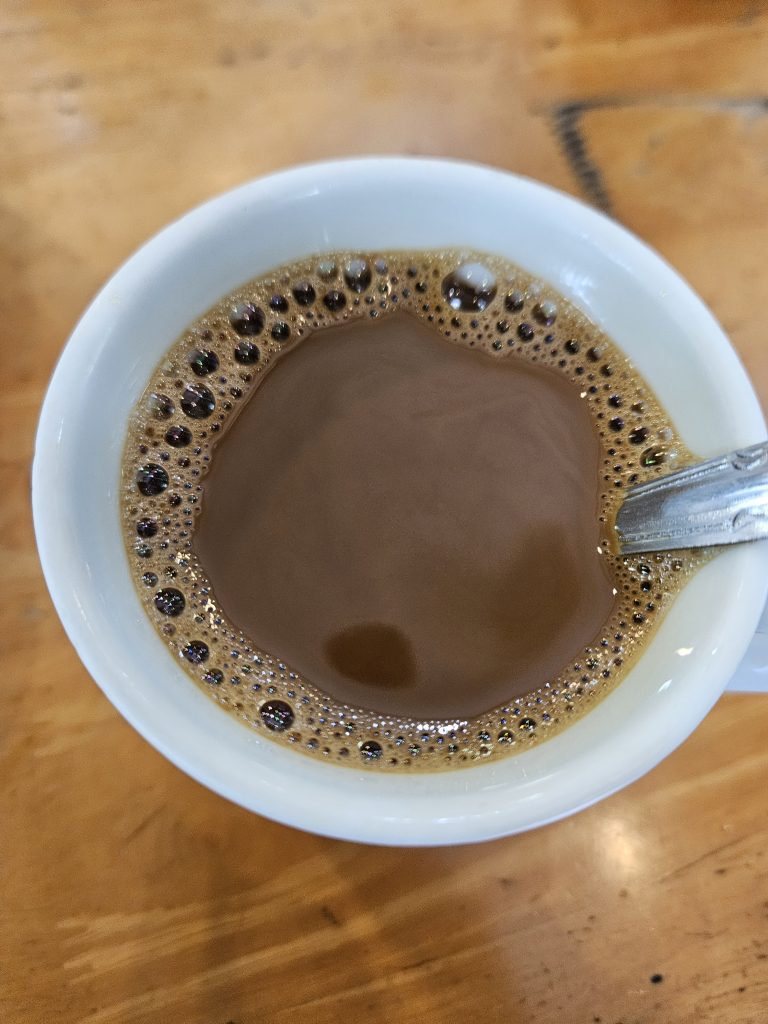
Well… for this kopi: great flavour and pleasant aftertaste, and not overly sweet or bitter. However, felt too thin-bodied. It’s worth the $1.50 though.
Taste: 4.5/5
Body: 2.5/5
Ratio: 4.5/5
Value: 4/5
Total: 77.5%
4. My hipster kopi
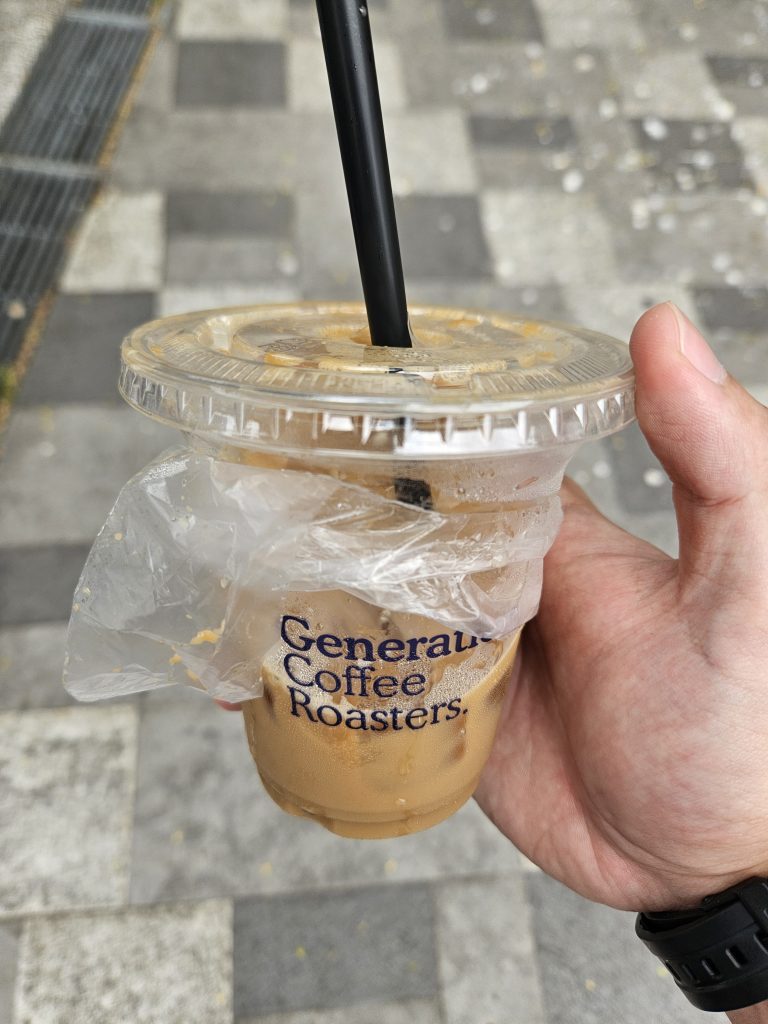
Honorable mention: Generation Coffee Roasters! So far this had the best coffee flavour that left an impression on me, even for a kopi beng i.e. diluted with ice!
Their traditional kopi shot is prepared using the modern espresso machine. The end result felt like the best of both worlds honestly.
I’d skip rating this one too as it’s slightly different (in a good way), but definitely worth trying out their coffee at their various outlets.
5. JB kopi
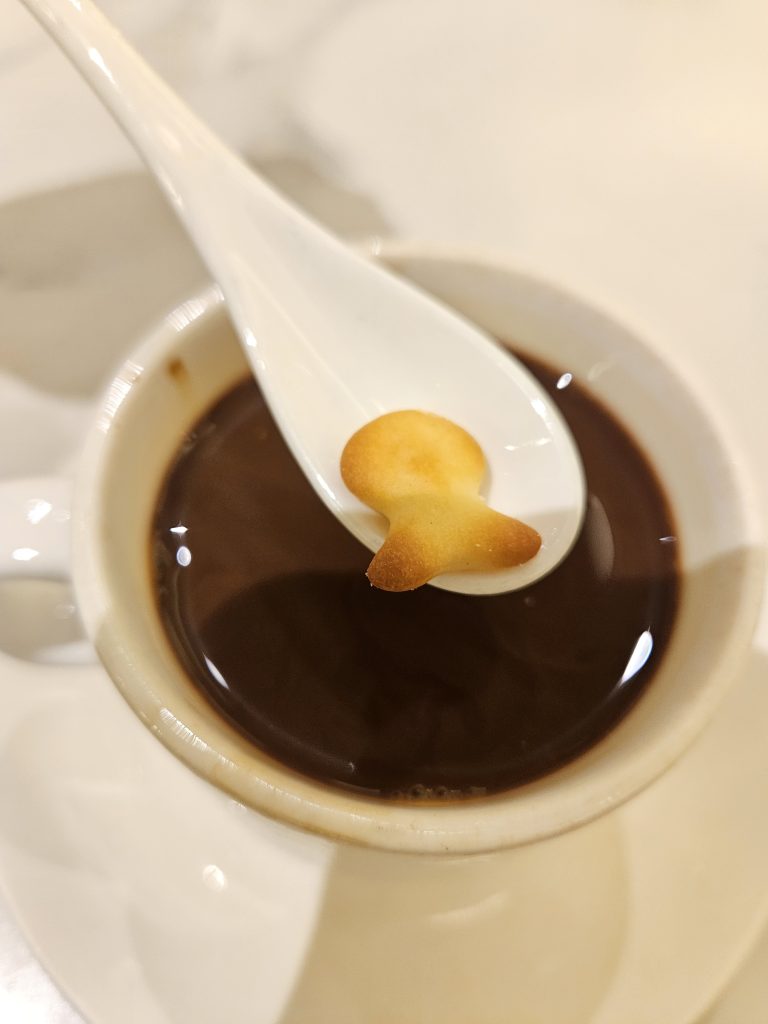
At this point, I’m running out of adjectives to describe kopi already… But that doesn’t mean I’m out of kopi options!
I was curious how kopi would be different in Johor Bahru. Well, I found out it tasted pretty much similar in every regard — the flavour, feel and balance. It also cost 5.20RM which was about $1.60 in SGD then.
However, what separates this from the Singapore’s kopi was actually the cute crunchy fish biscuits. Had fun letting the fishes swim in the pool of kopi… I’m giving bonus points for that!
Taste: 4/5
Body: 3/5
Ratio: 4/5
Value: 3/5
+1 brownie point
Total: 75%
6. Touristy kopi
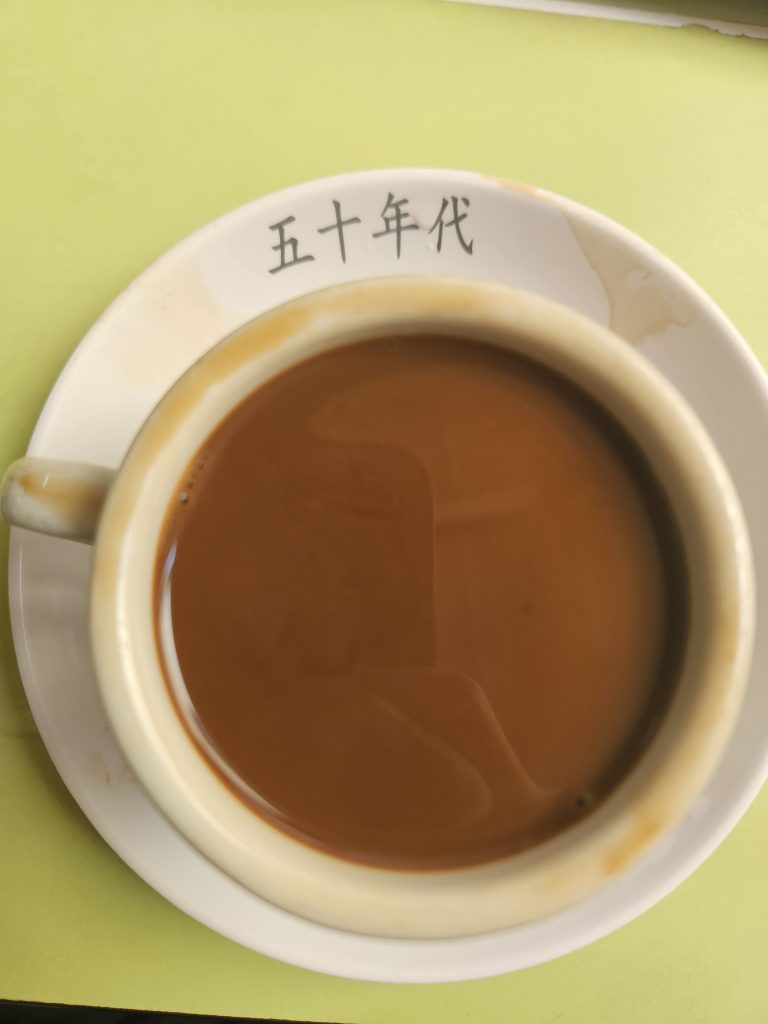
If you google “Best Kopi in Singapore”, 1950’s Coffee would definitely appear as one of the listings. When I visited, there was already a decently long queue comprising a mix of locals and tourists. The hype was real.
Unfortunately, after trying it out, I found it pretty average like other coffee shops. It has decent taste but felt a bit too thin and diluted. Unless you stay nearby, it might not be worth travelling for…
Taste: 4/5
Body: 3/5
Ratio: 4/5
Value: 3/5
Total: 70%
Verdict
If I am craving a good cup of kopi with friends, I would definitely go to Ya Kun and pay more for the quality & ambience.
However, if I am just looking for a quick kopi fix, I am fortunate to be able to visit different coffee shops nearby which mostly have great kopi already.
Project Kopi
Anyway, when I was away in Penang, I had this idea of making my own Kopi C Siu Dai at home, just like my caifan project…
Step 0: Gather stuff
So as a souvenir, I bought back some Penang coffee powder. Then I purchased a kopi sock online and a can of evaporated milk from the nearest grocery store.
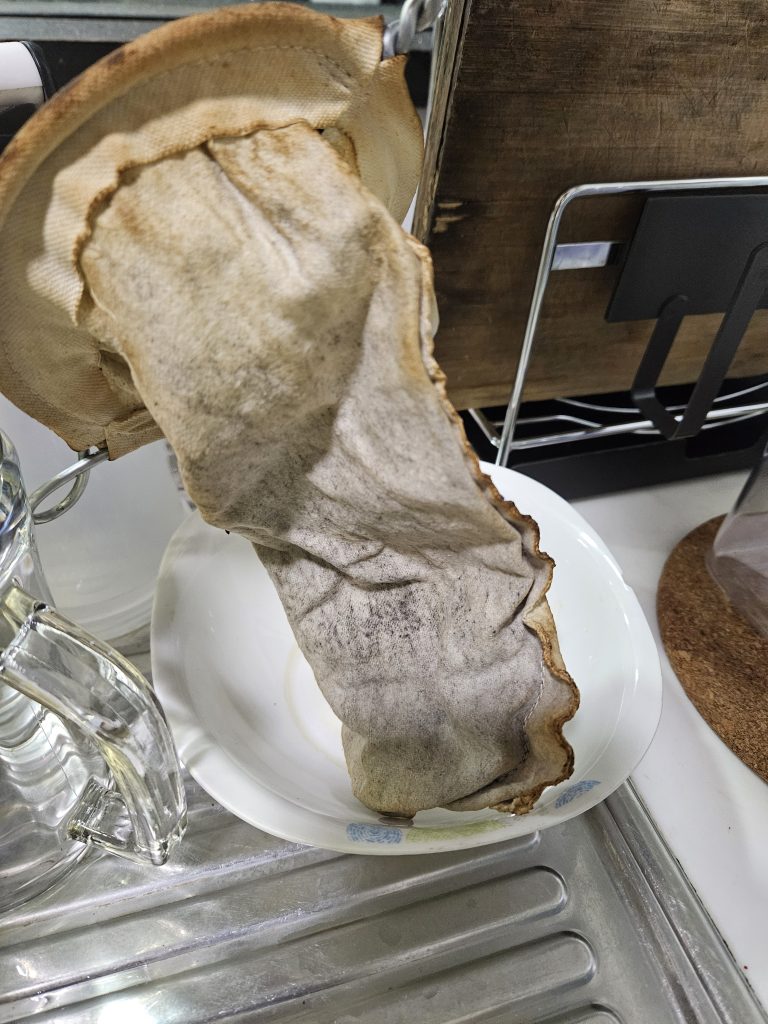
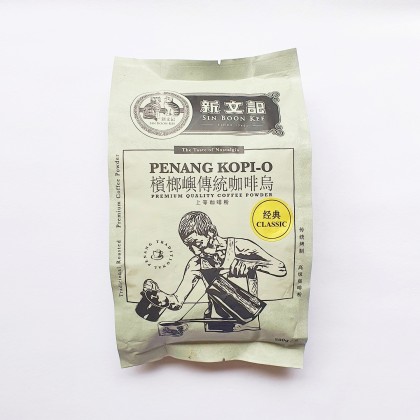
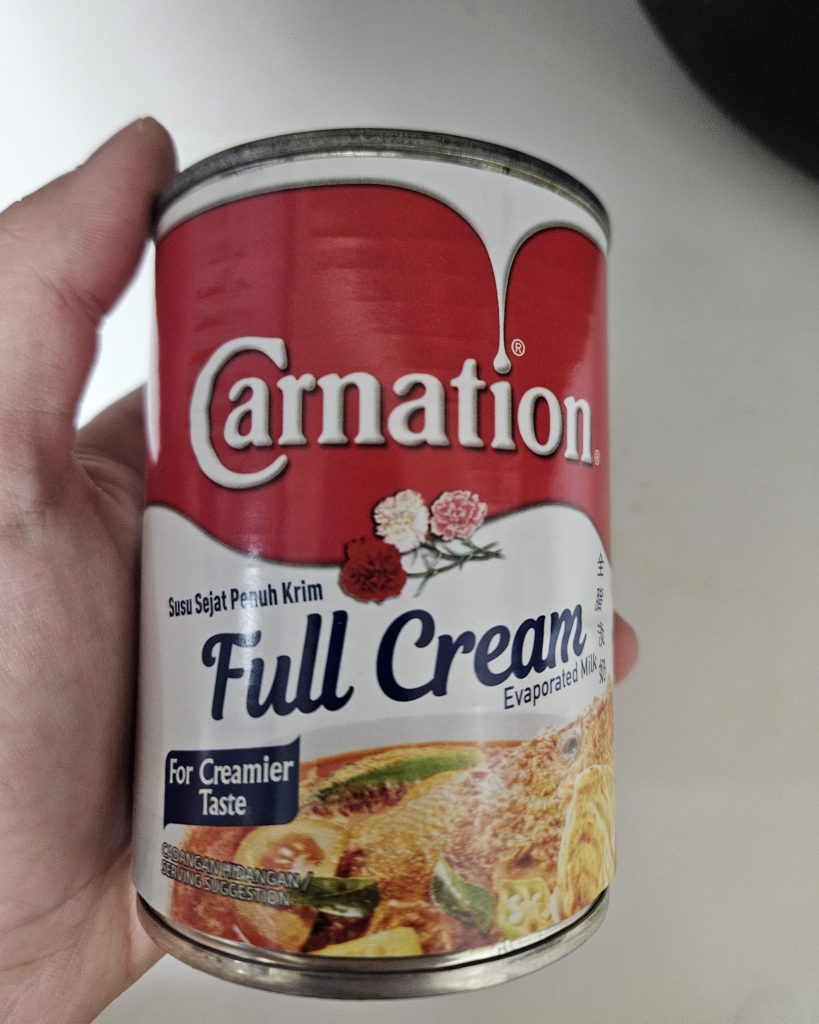
Fun Fact #2: The “C” in Kopi C actually means fresh in Hainanese dialect and is not a reference to the “Carnation” milk brand
Since this was just experimental, I didn’t bother getting stainless steel coffee pots. Instead, I would be using cups and spoons I have on hand. Now it’s time to brew my very own coffee!
Step 1: Brew coffee
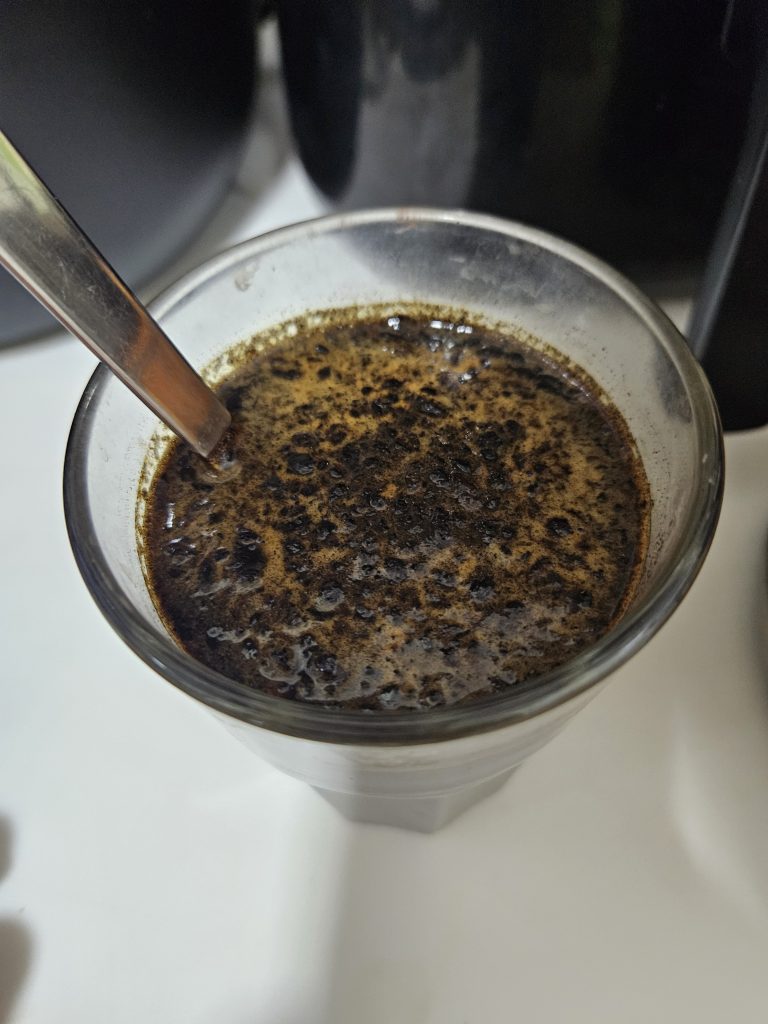
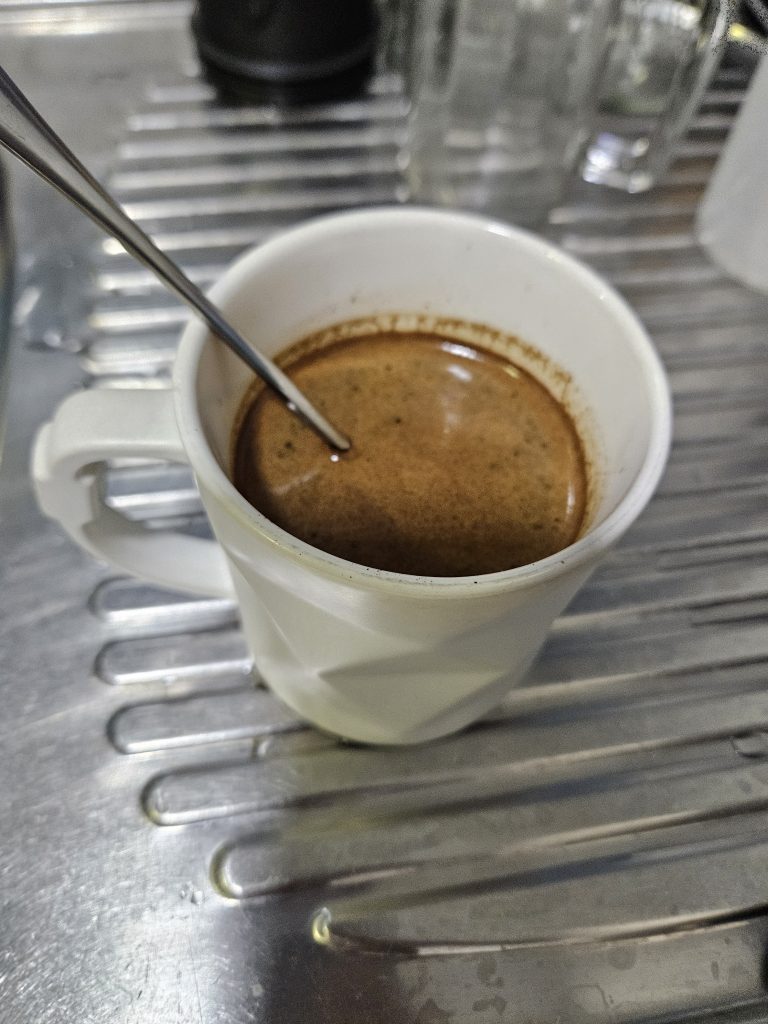
Weigh 20g ground kopi powder and pour ~250ml hot water in a cup. Stir coffee slurry for about 10s and let steep for about 3 min.
Step 2: Pre-heat cups and sock
No picture for this… I’m lazy and tend to skip this step 😅
Ok but the idea is to remove residual taste and to keep coffee hot longer. I drink mine right away, so it’s not that necessary.
Step 3: Filter coffee
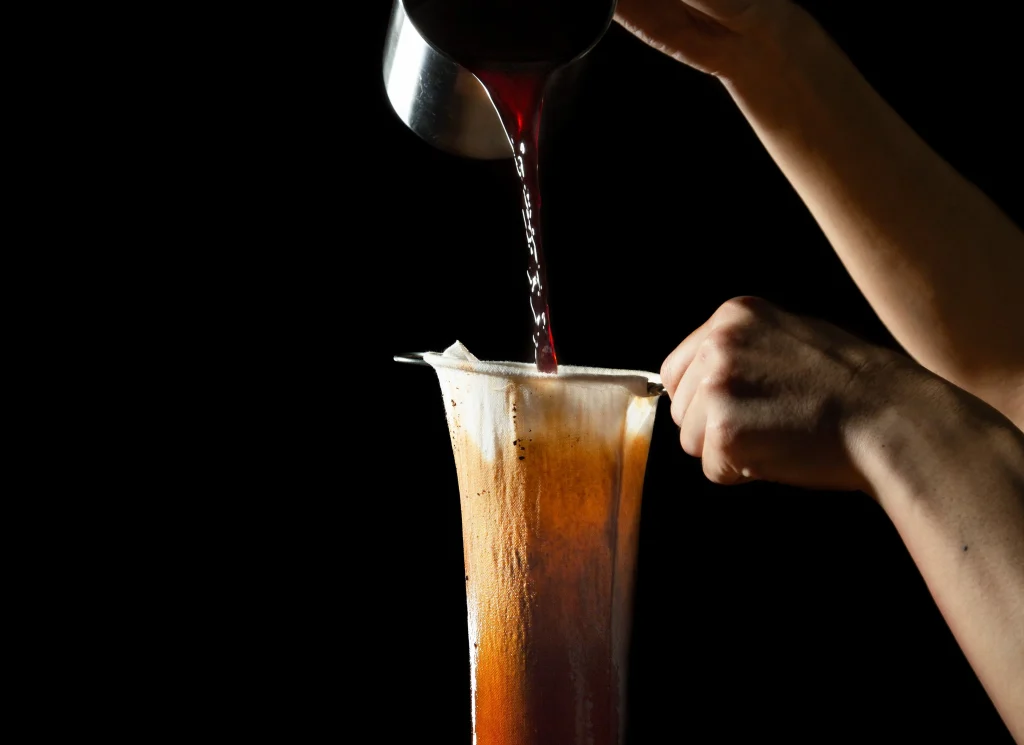
Source: How to Brew?! – Kopi Sock – Yong Seng Coffee
Stir slurry and then pour through the kopi sock to strain the coffee grounds. It’s not necessary to pull kopi i.e. pour from a height, but I do it sometimes for fun (and spill coffee in the process).
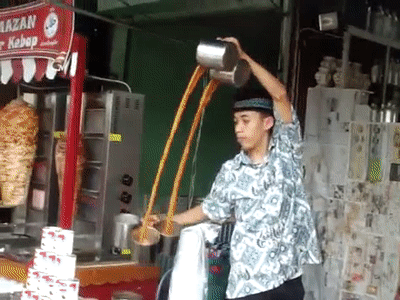
If you can do it like Mr Teh Tarik, I’m sure you would make the “frothiest” kopi ever…
Step 4: Decorate coffee
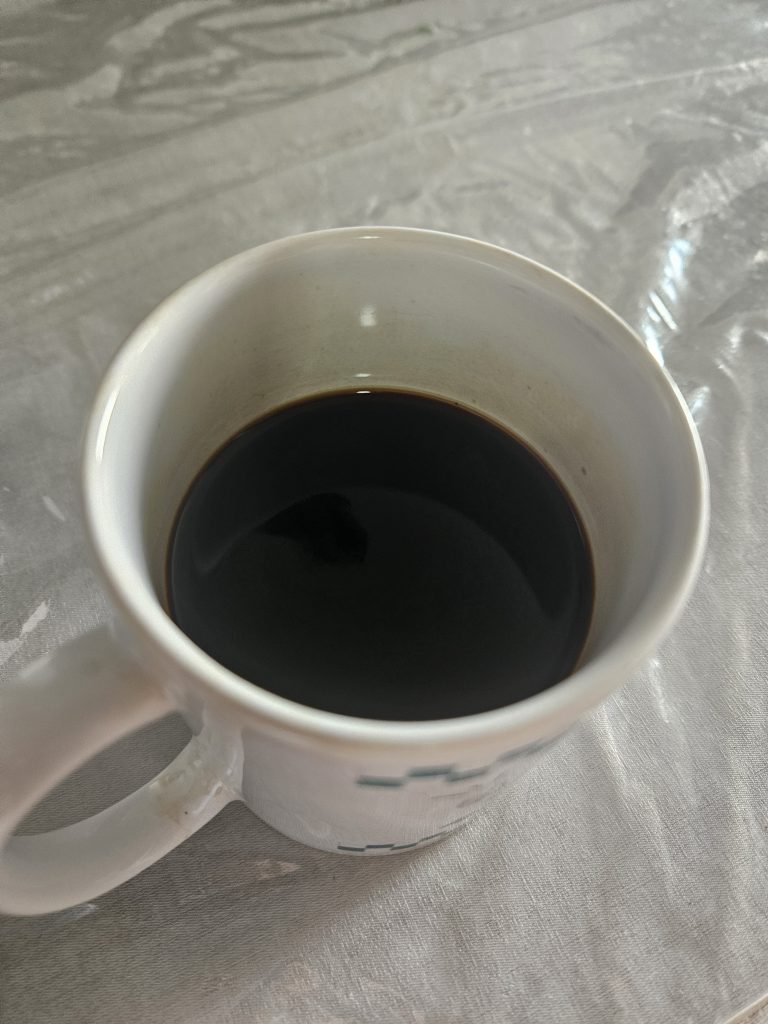
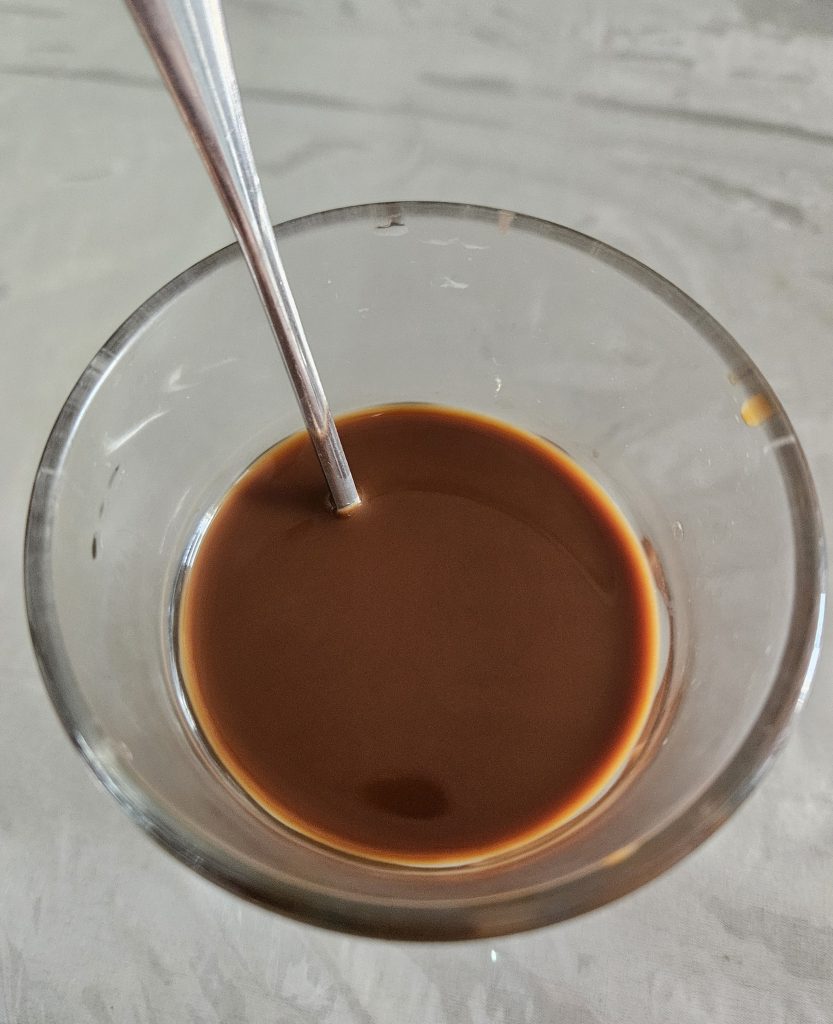
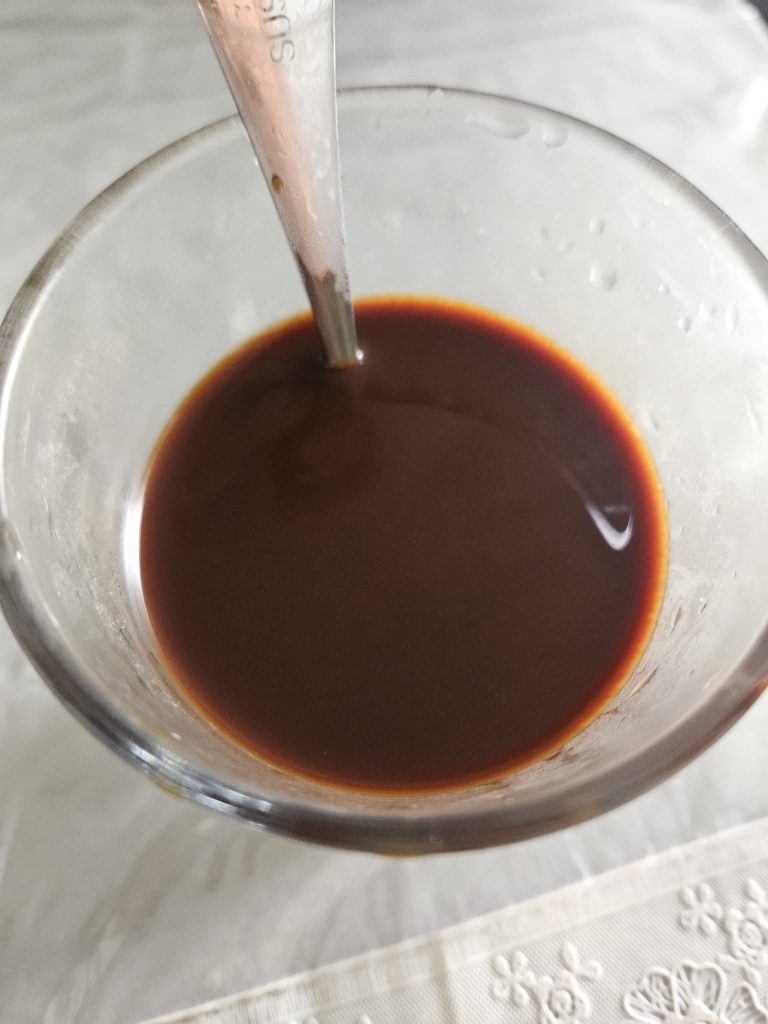
Ok finally, the last step – add sugar, milk and/or water to your desired taste. If not, just enjoy your Kopi O Kosong Gau!
Simple right? ok maybe not in the morning… 🥱
TL;DR
Serving size: 1 cup
Equipment
- 2 cups
- 1 kopi sock
Ingredients
- 20g kopi grounds
- 1 cup hot water (250ml)
Steps:
- Weigh kopi powder and pour hot water in a cup. Stir kopi slurry for about 10 seconds
- Let steep ~3 min then stir slurry before pouring through kopi sock into another cup
- Kopi O Kosong Gau is ready! Add sugar, milk & water to your desired kind of kopi
Tips & Tricks
1. Beans matter
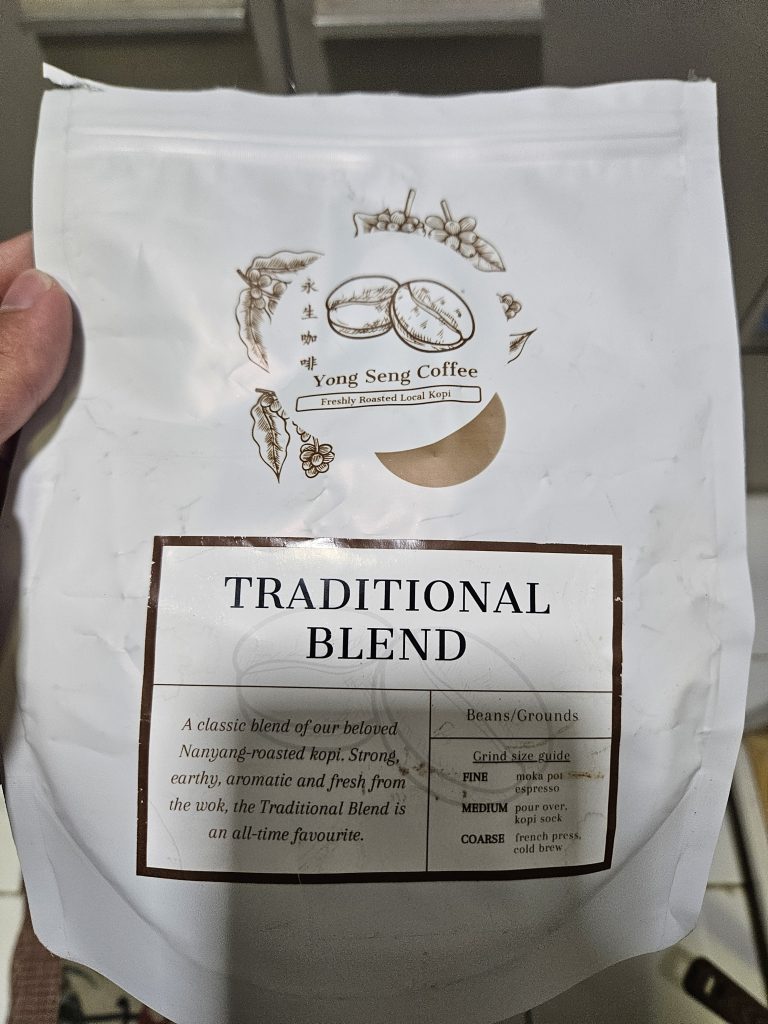
The choice of beans has the biggest influence on the flavour of the coffee. For the traditional kopi taste, Robusta beans roasted with butter/margarine/oil & sugar to a deep brown shade are the best.
I swapped my Penang kopi-O powder to Yong Seng traditional blend and the difference was significant. It has better aroma and much more smoky flavours. See above
2. Choose the right grind size
For kopi brewing with filter, use medium grind for your beans. Too fine and your filter might choke, resulting in over-extraction and bitter kopi; if it’s too coarse, extraction would be too slow.
3. Care for your beans!
I left my pre-ground kopi powder unused not for days, but weeks… After I overcame my procrastination, I felt it was less flavourful then when I first used it.
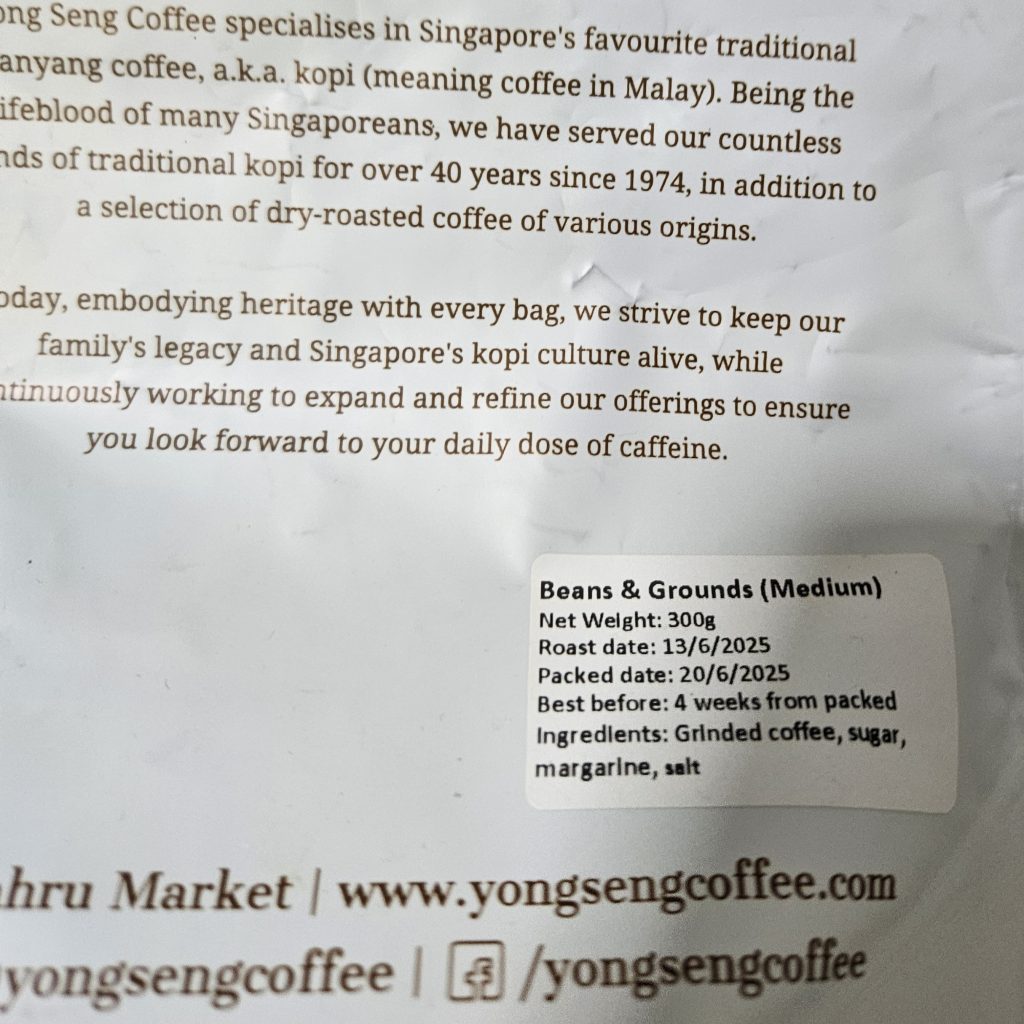
Coffee grounds go stale fast due to increased oxidation. Store in an airtight, opaque container and try to finish them within 1-2 weeks of opening.
4. Right water temperature
According to Specialty Coffee Association of America, water temperature of around 90 – 95°C (just off the boil) is ideal for brewing.
Using water that is too hot can lead to over-extraction, pulling out overly strong, bitter compounds that can mask subtle flavours of the coffee beans
On the flip side, if the water is too cold, it cannot dissolve flavourful compounds efficiently and lead to under extraction. This results in a sour or “flat” cup as the acids extract first before the sugars and oils come through.
For best results, use a temperature-controlled kettle or thermometer probe for a precise temperature. I didn’t have either, so the simple alternative is to bring water to a boil and let it sit for a few seconds. This will bring it close to the ideal brewing temperature.
5. Maintain your kopi sock

Over multiple usages, coffee oils may get retained on the sock filter. Wash kopi sock immediately after brewing with food grade detergent and sun dry thoroughly.
In addition, for heavy brewers, boil your kopi sock once a week with detergent. Otherwise, once a month will suffice. For more info, refer here.
To be continued…
I’ll admit I still reach for my instant coffee on lazy mornings. It takes effort to brew your own coffee and even more effort to clean up.
That’s why I’m really hoping to explore new coffee brewing methods and equipment that can simplify the process while improving the quality of my brew. I’m definitely looking into grinding my own beans for a start!
So readers, do you enjoy our local kopi? Which place has the best kopi and what kind of kopi are you koping with now? Let me know in the comments below! ☕
Reference
Some more kopi stuff to geek over:
Evaporated Milk – which is the best brand? | Alliance Coffee Singapore
